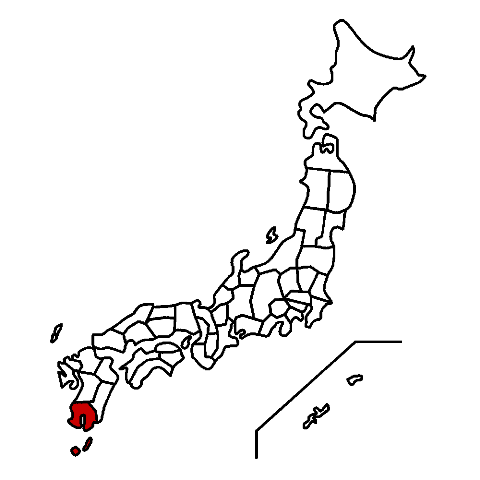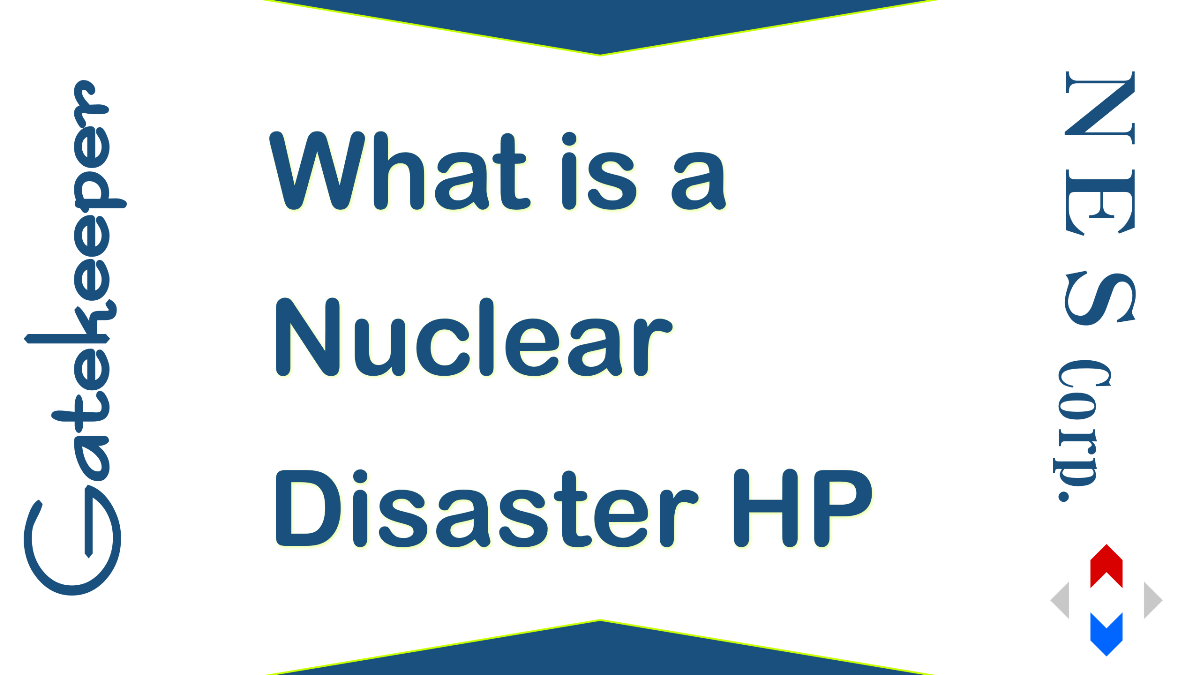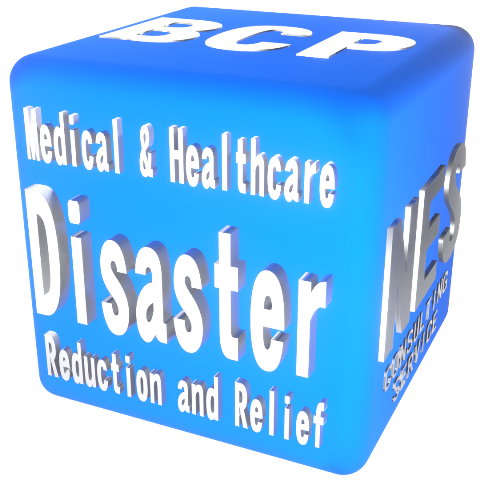“Nuclear Disaster Base Hospital” and “Nuclear Disaster Medical Cooperation Agency” are hospitals designated by the national government, the prefecture, etc. as a medical institution that functions as the center of nuclear disaster medical care in the disaster area in the event of a nuclear disaster based on the Act on Special Measures for Nuclear Disasters.
(Purpose and Purpose)
Nuclear Regulation Authority: Nuclear Disaster Management
This guideline shall be established by nuclear operators, heads of designated administrative agencies, heads of designated local government agencies, local governments, local governments, designated public institutions, designated local governments, and others to implement nuclear disaster countermeasures smoothly.
The purpose of this guideline is to ensure that the vital and physical safety of the people is paramount, and to ensure that protective measures are taken to avoid or minimize the serious and definitive effects of radiation on the residents, etc. around nuclear facilities in an emergency, and to reduce the risk of probabilistic impacts.
In order to achieve this goal, this guideline stipulates specialized and technical matters, etc. based on the following basic ideas in order to support scientific and objective judgments when nuclear operators, national governments, local governments, etc. formulate plans for nuclear disaster countermeasures and implement such measures.
Develop a disaster prevention plan from the perspective of the residents.
・Construct a system that continuously provides information, taking into account the long-term disaster.
・Revisions to ensure that the judgment standards used in the planning of the plan are always optimal, such as by actively incorporating the latest international knowledge such as the safety standards of the International Atomic Energy Agency (IAEA).Nuclear Disaster Management Guidelines
Table of contents
- BCP/BCM of Nuclear Disaster Base Hospital
- Basic requirements for nuclear disaster base hospitals
- Emergency Medical Care Provision System
- Provision of radiation-exposed medical care
- Medical cooperation with other nuclear disaster-based hospitals, etc.
- Medical workers
- Facilities
- Equipment and equipment
- Education, training and training
- Placement of a medical dispatch team
- Nuclear Disaster Medical and Comprehensive Support Center
- Advanced Radiation Exposure Medical Support Center
- Core Advanced Radiation Exposure Medical Support Center
Documents
- Documents
- Designation Requirements
- List of nuclear disaster base hospitals
- Hokkaido
- Aomori Prefecture
- Miyagi Prefecture
- Fukushima Prefecture
- Ibaraki Prefecture
- Kanagawa, Japan
- Niigata Prefecture
- Toyama Prefecture
- Ishikawa Prefecture
- Fukui Prefecture
- Gifu Prefecture
- Shizuoka Prefecture
- Shiga Prefecture
- Kyoto Prefecture
- Osaka Prefecture
- Tottori Prefecture
- Shimane Prefecture
- Okayama Prefecture
- Yamaguchi Prefecture
- Ehime Prefecture
- Fukuoka Prefecture
- Saga Prefecture
- Nagasaki Prefecture
- Kagoshima Prefecture
BCP/BCM of Nuclear Disaster Base Hospital
Nuclear disaster-based hospitals are required to formulate a business continuity plan (BCP) and practice business continuity management (BCM).
- Strive to develop a business continuity plan that can respond to nuclear disasters.
- Strive to conduct training and training in the event of a disaster based on a well-developed business continuity plan.
Basic requirements for nuclear disaster base hospitals
The nuclear disaster base hospital is a facility recognized by the prefecture, etc., as a “disaster base hospital” or a disaster base hospital.
The nuclear disaster medical cooperation agency has specifically indicated seven requirements, and the condition is that one or more are met.
- To be able to provide initial medical care and emergency medical care for people with exposure to injuries, etc.
- The applicant shall have and have a dispatch system for measuring personnel who can monitor the dose of thyroid radiation exposure to the evacuees, etc., based on instructions from the national government or prefectures, etc.
- Form a nuclear disaster medical dispatch team and have a dispatch system.
- You can send medical personnel to the first aid station.
- The applicant must have an inspection personnel who can carry out inspections at the time of evacuation leave for the evacuation zone, etc., and have a dispatch system based on instructions from the national government or the prefecture, etc.
- Support for the distribution of stable iodine agents by the location of the prefecture, etc.
- In addition, the necessary support in the event of a nuclear disaster can be provided.
In other words, it can be seen that the cooperating organizations do not require medical care for people who have been exposed to radiation.
Items 1 and 3 are actively treating radiation-exposed people, so specialized knowledge and skills are required.
The requirements for the medical system are described as referring to the section of the Nuclear Disaster Center Hospital.
Items 2 and 5 are provisions for personnel who inspect the degree of radiation exposure, so if you understand standard business procedures such as inspection procedures and troubleshooting, you can respond to some extent. Of course, you need training and training.
Item 4 stipulates the dispatch of medical workers, but since “first aid stations” are not defined, it is thought that many medical workers can respond to the first aid station that is responsible for general medical care that can be provided in the event of a disaster.
The requirements for the medical system are described as referring to the section of the Nuclear Disaster Center Hospital.
Item 6 is “support for distribution” of stable iodine agents. Because it is a medicine, amateurs can not distribute it unnecessarily, so we ask the cooperation of medical institutions.
Item 7 is the most ambiguous “Other”. The condition is that the necessary support in the event of a nuclear disaster can be provided, so even if you offer it if you can, we will cooperate if you can do it, but it is also possible to meet the designated requirements.
| Common name | Sales name | Manufacturer name | Attached document |
|---|---|---|---|
| Potassium iodide | Potassium Yoide Jelly 16.3mg “Nichi-Iko” / Potassium Yoide Jelly 32.5mg “Nik-Iko” | Nikkenko Co., Ltd. | Attached document |
| Potassium iodide | Potassium Yodenide 50mg “Nichiiko” | Nikkenko Co., Ltd. | Attached document |
| Potassium iodide | Potassium Yohide “Nichiiko” | Nikkenko Co., Ltd. | Attached document |
| Potassium iodide | Potassium Yoonide “Yamazen” | Yamazen Pharmaceutical Co., Ltd. | Attached document |
| Potassium iodide | Potassium Youkaide “Kosakai M” | Kosakai Pharmaceutical Co., Ltd. (Nikō Pharmaceutical Sales Co., Ltd.) | Attached document |
| Potassium iodide | Potassium Youkaide “Kosakai M” | Kosakai Pharmaceutical Co., Ltd. | Attached document |
| Potassium iodide | Potassium Yoide “Nikko” | Nikko Pharmaceutical Co., Ltd. | Attached document |
| Potassium iodide | Potassium Yoide “Nikko” | Nikko Pharmaceutical Co., Ltd. (Nikō Pharmaceutical Sales Co., Ltd.) | Attached document |
| Potassium iodide | Potassium Yoonide “Whey” | Viatris Healthcare LLC (Viatris Pharmaceutical LLC) | Attached document |
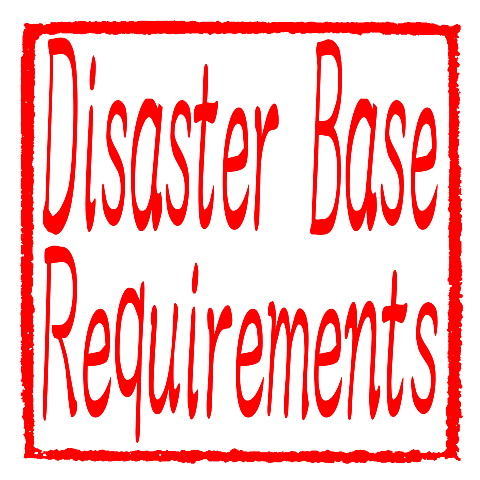
[Reference] Nuclear Regulation Authority: Roles and Designation Requirements for Nuclear Disaster-Based Hospitals, etc.
[Reference] Japanese Medical Association: Guidebook for Using Stable Iodine Medicine in Nuclear Disasters
Emergency Medical Care Provision System
When providing “emergency medical care” at all of the nuclear disaster-based hospitals and nuclear disaster medical cooperation organizations, it is necessary to have a system that can provide advanced medical care to serious injuries and sick people who frequently occur in the event of a disaster such as multiple injuries, aggravating syndrome, and widespread burns.
Emergency medical care must be provided with or without radioactive contamination.
In addition, it is also required to have a system that can cooperate with those who provide emergency medical care and those who provide radiation-exposed medical care to those who need “both” medical care for “emergency medical care” and “exposed medical care”.
We believe that it is a high hurdle to have “advanced medical care” to provide “advanced medical care” with or without contamination by radiation, and to cooperate with “those who provide radiation-exposed medical care”.
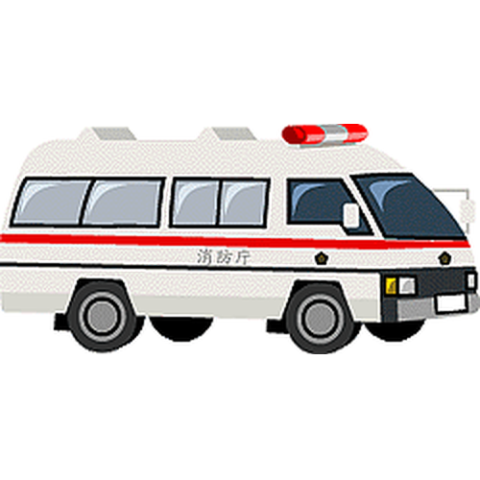
Provision of radiation-exposed medical care
When providing “medical care for radiation exposure” at all of the nuclear disaster-based hospitals and nuclear disaster medical cooperation organizations, it is necessary to have a system that can provide radiation-related medical care, etc. to radiation-induced injuries, decontamination measures, as well as intensive care.
In addition, it is necessary to have a system that can cooperate with those who provide emergency medical care and those who provide radiation-exposed medical care to the victims of radiation exposure, etc., who require both emergency medical care and those who need medical care for radiation exposure.
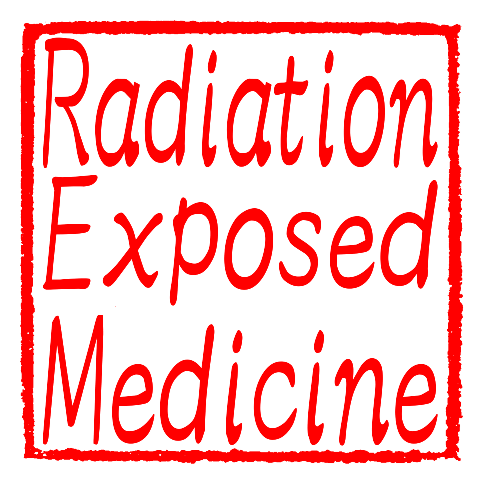
Medical cooperation with other nuclear disaster-based hospitals, etc.
Nuclear disaster base hospitals are required to provide medical cooperation such as accepting patients, transporting them to other hospitals, and receiving them.
Acceptance
It is required to have a system that can accept patients with radiation-exposed injuries, diseases, etc. that cannot be handled by the Nuclear Disaster Medical Cooperation Agency.
Transport
In accordance with the state of the victims of radiation exposure, it is required to have a system that can transport patients to other hospitals or medical centers for advanced radiation exposure in cooperation with related organizations.
Support
It is required to have a system such as appointing a waiting place and a person in charge of the response when accepting support for the nuclear disaster medical dispatch team dispatched from the base hospitals set up in the prefecture, etc., which are located in other locations.

Medical workers
Facility Manager
The facility manager of the nuclear disaster base hospital must be required to receive training on nuclear disaster medical care.
Training for nuclear disaster medical care includes basic training conducted by the prefectures of the location, the specialized training conducted by the Center for Advanced Radiation Exposure Medical Support, and the basic training related to nuclear disaster medical care e-learning.
Core Human Resources for Nuclear Disaster Medicine
The Nuclear Disaster Center Hospitals must be assigned to those who have received specialized training on nuclear disaster medical care held by the Advanced Radiation Exposure Medical Support Center.
The specialized training that should be taken with respect to nuclear disaster medical care refers to the “Nuclear Disaster Medical Core Human Resources Training” conducted by the Center for Advanced Radiation Exposure Medical Care.
Doctors with expertise and skills
Nuclear disaster base hospitals are required to have doctors in disaster medical care and radiation-exposed medical care.
- One or more doctors with specialized knowledge and skills in emergency medical care or disaster medical care to be carried out at the facility are arranged.
- One or more doctors with specialized knowledge and skills are assigned to radiation-exposed medical care.
Non-specialized physicians.
Nuclear disaster-based hospitals are also required to place nurses who can perform specialized activities.
- One or more nurses with specialized knowledge and skills in the nursing care of emergency medical care or disaster medical care to be carried out at the facility are assigned
- After performing radiation protection, more than one nurse can provide the necessary nursing care.
- 1 or more people with basic knowledge of dose evaluation and skills to perform the necessary tests and sample collection according to the instructions of the dose evaluation specialist
- One or more persons with specialized knowledge and skills in decontamination procedures are arranged.

[Reference] Nuclear Regulation Authority: Roles and Designation Requirements for Nuclear Disaster-Based Hospitals, etc.
[Reference] Nagasaki University: Nuclear Disaster Medical Care Core Human Resources Training
[Reference] Hiroshima University Radiation Disaster Medical Support Center: Training and Training
[Reference] Department of Radiological Disaster Medicine, Fukushima Medical University: Schedule
Facilities
The nuclear disaster base hospitals are required to have the following facilities and facilities.
- Decontamination room required for decontamination
- Treatment room for first-aid treatment for people with radiation-exposed injuries, etc.
- A hospital room where in-patient treatment for patients with exposure to radiation
If it is not possible to secure a decontamination room, treatment room, or hospital room in advance, it is also possible to establish a system by curing a room separated from ordinary patients in the event of a nuclear disaster. The room includes a decontamination tent.
If the nuclear disaster base hospital is not a “disaster base hospital”, it is desirable to have the following facilities. The following items are desirable, not obligatory.
- Facilities with earthquake-resistant structures and necessary to maintain hospital functions
- In-house generators, etc., and about three days of fuel
- Concludes a water tank with appropriate capacity, well facilities that can be used even in the event of a power outage, and a preferential water supply agreement to secure the water necessary for medical treatment in the event of a disaster, etc.
- A helicopter take-off and landing site on the hospital grounds or in close proximity to the hospital
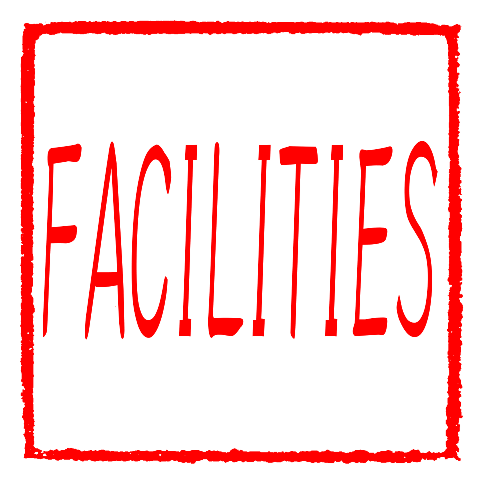
Equipment and equipment
Nuclear disaster base hospitals are required to provide the following facilities and equipment necessary for emergency and disaster medical care, including:
- Materials and equipment necessary for radiation protection of medical personnel, etc.
- Radiation measuring instrument
- Dose evaluation of the place where treatment is performed
- Dose assessment of body surface contamination
- Dose assessment of internal exposure
- Equipment and medicines necessary for medical treatment of radiation exposure
- Materials and equipment needed for decontamination
- Equipment that can temporarily store contaminated clothing, equipment, and washing water
- An environment where satellite phones and satellite-line Internet can be used in the event of a disaster, and multiple means of communication
It can be considered that if there is a system for conducting dose assessment tests for internal exposure at other hospitals, etc., it is considered that it is in place.
For pharmaceuticals, radioactive cesium exliminators and transuranic elemental exfoliators are applicable. If a system is established that can receive medical care at the Advanced Radiation Exposure Medical Support Center, etc., it can be considered that it is in place.
The Center for Advanced Radiation Exposure Medical Support is Hirosaki University, Fukushima Medical University, Fukui University, Hiroshima University, and Nagasaki University. The Critical Advanced Radiation Exposure Medical Support Center is the Quantum Science and Technology Research Institute, QST Hospital, known as the National Institutes of Health Sciences.
If it is not possible to secure equipment that can be temporarily stored in advance, it is also good to establish a system that can be temporarily stored after a nuclear disaster.

[Reference] Nuclear Regulation Authority: Roles and Designation Requirements for Nuclear Disaster-Based Hospitals, etc.
[Reference] Institute of Radiology, Quantum Science and Technology Research Institute: Outline of the Center for Support for Advanced Radiation Exposure Medicine
Education and training
Nuclear disaster base hospitals are required to meet each item promptly after the designation, after having a system that can perform the following tasks.
Education and Training
- As a general rule, we regularly provide education and training to all employees at our own facilities (technical personnel such as doctors, nurses, medical radiologists, etc., administrative staff, etc.)
- Regularly conduct training for officials from cooperating organizations in the jurisdiction, etc., and cooperate with education and training conducted by the prefecture, etc.
Training
- Regular training is conducted on personnel involved in nuclear disasters.
- Location Participate as a base hospital in training conducted by Hokkaido Prefecture, etc.
- Location Dofu Prefecture, etc. Strive to participate as a base hospital in training conducted in cooperation with the country
Building a Regional Collaboration Network
- In cooperation with the location of the prefecture, etc., we regularly hold regional cooperation network meetings with cooperating organizations, etc. to cooperate with cooperating organizations, etc., and cooperate with them.
In the prefecture of the relevant location, it is possible that other hospitals in the prefecture of the relevant base are conducting regional cooperation network meetings etc. to cooperate and cooperate with the regional cooperation network meeting, etc., and it can be considered that it is arranged.
Location Cooperation with Hokkaido Prefecture, etc.
- Location Prefecture, etc., cooperate with nuclear disaster countermeasures
Nuclear Disaster Relief and Medical Cooperation Agency
The following requirements are required for cooperating organizations.
- Regularly hold education and training for staff members involved in nuclear disaster countermeasures at their own facilities, or to participate in trainings conducted by the designated prefecture, prefecture, etc., or the base hospital, etc.
- To have employees involved in the nuclear disaster countermeasures of their own facilities hold regular training, or to participate in training conducted by the designated prefecture, etc., or the base hospital, etc.

Placement of a medical dispatch team
Nuclear disaster-based hospitals are required to have a medical team that can be dispatched.
Positioning, Qualities
- Form a nuclear disaster medical dispatch team consisting of one or more each radiation protection personnel who perform radiation control, such as doctors, nurses, and radiologists, and four or more people as a team.
- In addition to knowledge and skills of disaster medical care, students must have knowledge of nuclear disaster and radiation protection, which are specific and minimally necessary for nuclear disaster medical care.
In addition, radiation protection personnel must have technology for radiation measurement.
As a member of the Nuclear Disaster Medical Dispatch Team, the Nuclear Disaster Medical Assistance Team Training Program is conducted by the Nuclear Disaster Medical Care and General Support Center.
Equipment
- Have the necessary equipment for emergency medical care and disaster medical care
- Have the necessary materials and equipment for radiation protection assuming medical activities for victims and sick people who are exposed to radiation after the start of release of radioactive materials.
- In principle, having the necessary vehicle for dispatching a nuclear disaster medical dispatch team.
The materials and equipment necessary for radiation protection can be considered as prepared in the event of an emergency, if it can be procured from other facilities.
For vehicles, it is desirable to have vehicles that can be equipped with emergency medical equipment, protective equipment necessary for radiation protection, equipment, measuring equipment, etc.
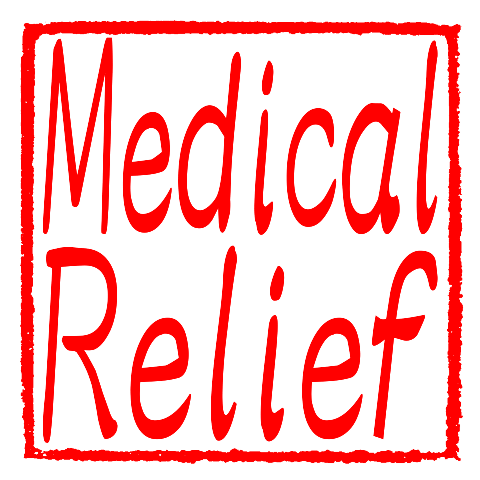
Nuclear Disaster Medical and Comprehensive Support Center
The Nuclear Disaster Medical and Comprehensive Support Center is responsible for building a regional and nationwide radiation-exposed medical care network, organization of medical dispatch team, and dispatch coordination of nuclear disaster medical treatment dispatch team dispatch team.
Hirosaki University, Fukushima Medical University, Hiroshima University, and Nagasaki University have been designated as designated by the university.
The specified requirements are as follows.
Medical system: Medical function
- Fulfill the items listed in the designated requirements for nuclear disaster hospitals, such as “(2) Medical system, etc., 1 medical system, etc.”
Medical system: Medical cooperation with nuclear disaster base hospitals, etc.
- Have a system that can dispatch nuclear disaster medical dispatch teams, etc. to the base hospitals, etc.
- Have a system that can provide professional advice for medical care at the base hospital, etc.
Medical system: Placement of medical personnel, etc.
- In addition to the requirements listed in the designated requirements for nuclear disaster-based hospitals, “(2) Medical system, etc., 3 placement of medical personnel, etc.”
- The necessary personnel for the dispatch coordination and activity support of the nuclear disaster medical dispatch team are secured.
- In normal times, the necessary personnel have been secured to collect information on the base hospital, nuclear disaster medical dispatch team, etc., and to share information with related parties.
Facilities and equipment
- In addition to the requirements listed in the designated requirements of the nuclear disaster base hospital “(3) facilities, equipment, etc.”, it has facilities necessary for the implementation of education and training.
- In addition to the requirements listed in the designated requirements of the nuclear disaster base hospital “(3) facilities, equipment, equipment, etc.”, the following requirements must be met.
- Have the necessary facilities for the dispatch coordination of the nuclear disaster medical dispatch team from outside the affected area
- Having communication network facilities with the base hospital, etc.
- As a general rule, in order to ensure the implementation of dispatch, having vehicles equipped with communication equipment such as satellite lines that can communicate from disaster-affected areas.
Education and Training
- As a general rule, education and training should be conducted regularly for all employees at their own facilities (medical personnel, technical staff such as doctors, nurses, radiologists, etc., administrative staff, etc.).
- Regularly provide highly specialized education and training conducted by the Medical Support Center for Advanced Radiation Exposure Medical Support, etc. to the staff of your own facilities.
Training
- Regular training of employees involved in nuclear disasters at their own facilities
- Regularly conduct dispatch coordination training at your own facility
- To provide advice or guidance on training based on dispatch training and business continuity plans conducted by the base hospital, etc. at the request of the base hospital, etc.
- Participation in training held by the national government or the prefecture, etc. at the request of the national government or the prefecture, etc.
Building a national network
- Regular meetings and cooperation meetings with people related to nuclear disaster medical care, for information exchange, etc., by persons involved in nuclear disaster medical care nationwide, shall be established in peacetime.
- In order to coordinate the dispatch of nuclear disaster medical dispatch teams such as base hospitals, we will establish a nationwide network to strengthen cooperation and cooperation with related medical institutions on a nationwide scale from normal times.
- Cooperate with meetings held by the Center for Advanced Radiation Exposure Medical Support for Information Exchange of Information on Radiation Protection Measures, Dose Evaluation, and Other Information-Semitting
Support for nuclear disaster-based hospitals, etc.
- Provide guidance necessary for the nuclear disaster medical dispatch team to work at the destination and training to train the members of the nuclear disaster medical dispatch team
- To provide advice and other support to build local networks to local base hospitals
- To provide advice to the base hospitals, etc. to develop a business continuity plan, etc.
Establishment of Nuclear Disaster Medical Dispatch Team, etc.
- In addition to the designated requirements for nuclear disaster-based hospitals, (5) placement of nuclear disaster medical dispatch teams, etc., persons with knowledge of radiation protection measures, radiation measurement of the work environment, dose assessment of the wounded and sick with exposure, etc. shall be assigned.
Dispatch coordination of nuclear disaster medical dispatch team
- In the event of a nuclear disaster, based on the request from the prefecture, etc. where the nuclear disaster occurred, the nuclear disaster disaster dispatch team dispatched from outside the prefecture, etc., the nuclear disaster medical dispatch team dispatched from outside the prefecture, etc. where the nuclear disaster occurred must be in place.
- In the event of a nuclear disaster, have a system to provide support for activities such as providing local information to the Nuclear Disaster Medical Dispatch Team.
- In peacetime, have a system to collect information on the base hospital, nuclear disaster medical dispatch team, etc., and share information with related parties.
Others
- In the event of a nuclear disaster, a system to dispatch experts at the request of the national government or the prefecture, etc.
- Develop a business continuity plan that can respond to nuclear disasters.
- Conduct training and training based on the well-developed business continuity plan, assuming the situation affected by the disaster
- Develop a business policy to play a role as a nuclear disaster medical care and comprehensive support center.

[Reference] Nuclear Regulation Authority: Roles and Designation Requirements for Nuclear Disaster-Based Hospitals, etc.
[Reference] Hiroshima University Radiation Disaster Medical Support Center: Role and Designation Requirements for Nuclear Disaster Medical Care and Comprehensive Support Center
Advanced Radiation Exposure Medical Support Center
The Advanced Radiation Exposure Medical Support Center is responsible for medical treatment and specialized education and training for patients with radiation exposure.
Hirosaki University, Fukushima Medical University, Fukui University, Hiroshima University, and Nagasaki University have been designated as designated by the university.
The specified requirements are as follows.
Medical provision system: Medical function
- In addition to the items listed in the designated requirements for nuclear disaster hospitals “(2) medical system, etc., medical system, etc., medical functions, etc.”
- Have a system that can treat and monitor patients with long-term and specialized treatment for patients with exposure to radiation and long-term follow-up
- A system that can provide medical care to the injured and sick with exposures that are difficult to decontaminate (remaining high-concentration surface contamination after multiple water cleanings) and have a system that can provide medical care to the injured and sick with radiation exposure that is likely to cause secondary contamination, etc.
- For those who are exposed to radiation, the same treatment as the Emergency Medical Care Center for severe critical care (including medical treatment for acute radiation syndrome) Have a system that can provide
Medical provision system: Medical cooperation with nuclear disaster base hospitals, etc.
- Have a system that can provide specialized advice from the viewpoint of radiation exposure medical care for medical care at the base hospital, etc.
- A system that can provide highly specialized, physical, and biological individual dose assessment (nuclei species identification by spectral analysis, precise analysis of radioactive substances, dose evaluation by chromosome analysis, etc.) for people with exposure to radiation exposures, etc. accepted by the base hospital, etc.
Medical provision system: Placement of medical personnel, etc.
- The facility manager has received nineteen trainings on nuclear disaster medical care, etc.
- The placement of doctors with specialized knowledge and skills in nuclear disaster medical care must meet the following requirements:
- One or more doctors with specialized knowledge and skills should be assigned to the treatment of patients with long-term and specialized treatment and long-term follow-up.
- One or more doctors with specialized knowledge and skills should be assigned to treating patients with severe exposure that is difficult to decontaminate (remains of high-concentration surface contamination after multiple flushings, etc.) and has a large possibility of secondary contamination.
- The placement of persons other than doctors with specialized knowledge and skills must meet the following requirements:
- After performing radiation protection, one or more nurses who can provide necessary nursing care to those who are exposed to radiation and those who require long-term and specialized treatment should be assigned.
- Place at least one person with specialized knowledge and skills in dose evaluation.
- Place at least one person with specialized knowledge and skills in decontamination procedures.
Facilities
- In addition to the items listed in the designated requirements of the nuclear disaster base hospital “(3) facilities, equipment, etc., one facility, etc.”
- Have a hospital room where long-term observation, inpatient treatment, etc. can be performed for exposed injuries and illnesses, etc.
- Have a sterile chamber, etc. necessary for medical treatment such as acute radiation syndrome
- Have the necessary facilities for the implementation of education and training
Equipment and equipment
- In addition to the items listed in the designated requirements for nuclear disaster hospitals “(3) facilities, equipment, equipment, etc.”, the following facilities, equipment, etc. are maintained
- Have detailed dose assessment and measurement of internal exposures and have extra-individual measurement equipment and equipment necessary for measurement
- Have the necessary equipment and equipment for the evaluation of internal radiation dose, including actinide
- Have equipment and equipment for biological dose assessment.
Education and Training
- To provide specialized education and training to hospitals and cooperating organizations, such as measures to prevent the spread of contamination, radiation protection measures, and dose evaluations, etc.
- Provide specialized education and training to core human resources such as base hospitals and cooperating organizations
- To provide support for training by the training provided by the base hospitals, nuclear disaster medical care and general support centers, and advanced radiation-exposed medical support centers, including in the prefectures of the location, the preparation and review of training of training materials, and the training of training instructors.
- If the core advanced radiation medical support center is designated, cooperate in supporting the preparation and review of the curriculum and materials provided by the core Advanced Radiation Exposure Medical Support Center, and the training of lecturers.
- Regularly provide highly specialized education and training conducted by the Medical Support Center for Advanced Radiation Exposure Medical Support, etc. to be conducted by staff at your own facilities.
Training
- Regular training of personnel involved in nuclear disasters
- To provide advice or guidance on training conducted by the base hospital at the request of the base hospital
- Participation in training held by the national government or the prefecture, etc. at the request of the national government or the prefecture, etc.
Building an expert network
- Build a human network of experts on radiation exposure medicine and dose assessment
- Establish a nationwide system of cooperation and cooperation with experts on radiation protection measures and dose assessment, etc. from normal times. In addition, regular meetings for information exchange with experts (cooperation when the core advanced radiation exposure medical support center implements it)
- Cooperate with meetings held by the Nuclear Disaster Medical Care and General Support Center for information exchange by persons involved in nuclear disaster medical care
Location Cooperation with Hokkaido Prefecture, etc.
- Dispatch of thyroid dose monitoring personnel to be dispatched and adjusted
- To cooperate with nuclear disaster countermeasures carried out by the prefectures, etc.
Others
- In the event of a nuclear disaster, a system shall be dispatched to provide experts in radiation exposure medical care and dose assessment at the request of the national government or the prefecture.
- With the cooperation of related organizations, it is possible to collect data on cases of nuclear disaster medical care, etc.
- Research on nuclear disasters, radiation exposures, etc., including internal exposures, is being conducted.
- Develop a business continuity plan that can respond to nuclear disasters.
- Conduct training and training based on the well-developed business continuity plan, assuming the situation affected by the disaster
- Develop a business policy to play a role as a medical support center for advanced radiation exposure.
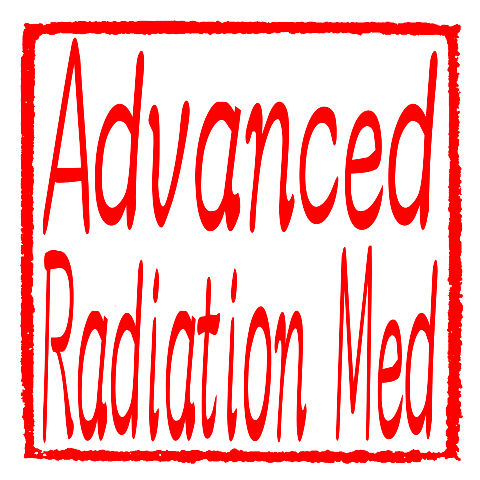
Core Advanced Radiation Exposure Medical Support Center
The core advanced radiation exposure medical support center is responsible for radiation dose evaluation and highly specialized education and training.
The National Institute of Quantum Science and Technology (QST) has been designated as a member of the Quantum Science and Technology Agency (QST).
The specified requirements are as follows.
Medical system: Medical function
- Have a system that can provide medical care to patients with severe exposure
- Have a system that can perform highly specialized dose evaluations (bioassay methods, chromosomal analysis, etc.) by alpha nuclides, etc.
Medical system: Collaboration with Advanced Radiation Exposure Medical Support Center, etc.
- Have a system that can cooperate with medical care provided at the Advanced Radiation Exposure Medical Support Center
- Have a system that can provide specialized advice to the Nuclear Disaster Medical and Comprehensive Support Center and the Advanced Radiation Exposure Medical Support Center
Medical system: Placement of medical personnel, etc.
- Place at least one doctor with knowledge and skills in highly specialized medical care for seriously exposed patients.
- Place at least one specialized human resource with knowledge and skills in dose assessment (bioassay method, chromosomal analysis, etc.) for critically ill patients.
Medical system: R&D and human resource development
- Have a system for conducting research on nuclear disasters, radiation exposures, etc., including serious exposures
- Have a system to secure and develop highly specialized human resources who can respond to nuclear disasters, radiation exposures, etc., including serious exposures.
Facilities and equipment
- Have the necessary equipment and equipment for the evaluation of serious exposure dose, including actinide (especially internal exposure)
Education and Training
- A system that can provide highly specialized education and training for activinide, including physical and biological individual dose evaluations including alpha nucleolithic (speculation identification by spectral analysis, precise analysis of radioactive substances, dose evaluation by chromosome analysis, etc.)
- Regularly provide highly specialized education and training for health care workers and specialized engineers belonging to the Nuclear Disaster Medical Care and Comprehensive Support Center and the Advanced Radiation Exposure Medical Support Center.
- One-level management of training information on nuclear disaster medical care. In addition, having a secretariat for that
- A system that provides basic training and practical training on nuclear disaster medical care conducted by the location prefecture, prefectural, etc., as well as the preparation and review of highly specialized training curricula and materials conducted by the Nuclear Disaster Medical Care and General Support Center or the Advanced Radiation Exposure Medical Support Center, and the training of lecturers who perform these trainings.
- Have a system that can provide the created curriculum, materials, etc. to the base hospital, etc.
Building an expert network
- As soon as designated, establish a nationwide system of cooperation and cooperation with experts on radiation protection measures and dose assessment, etc. from time to time, and hold regular meetings for information exchange.
Others
- Develop a business continuity plan that can respond to nuclear disasters.
- Conduct training and training based on the well-developed business continuity plan, assuming the situation affected by the disaster
- Formulation of a business policy to play a role as a core advanced radiation exposure medical support center
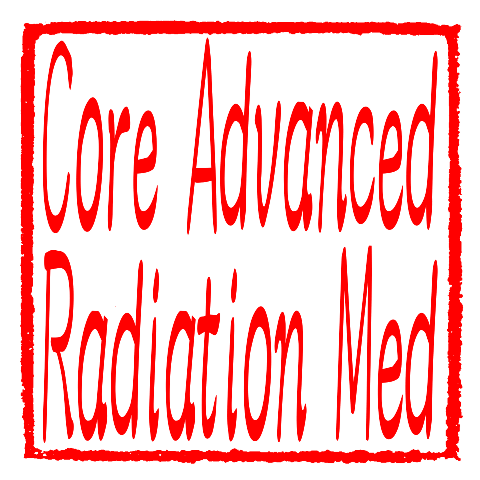
Documents
Designation Requirements
”Nuclear Disaster Base Hospital” and “Nuclear Disaster Medical Cooperation Organization” are designated according to the designated requirements based on the Nuclear Disaster Countermeasures Guidelines.
The Nuclear Disaster Countermeasures Guidelines describe the role of the country and the prefecture as follows.
(i) Country
- The State is required to designate or register medical institutions, etc. that play the following roles (hereinafter referred to as the “designated requirements”) Decide and make regular necessary reviews.
- Nuclear Disaster Center Hospital (hereinafter referred to as the “base hospital”):
- The base hospital is a medical institution that is the center of nuclear disaster medical care in the affected area in the event of a nuclear disaster. In addition, those who are injured and contaminated with radiation exposure and those suspected of being infected (hereinafter referred to as “injured and sick people, etc.”) Provide appropriate medical care for them. In addition, a nuclear disaster medical dispatch team will be formed in Hokkaido Prefecture, where the nuclear disaster occurred, to provide emergency medical care, etc.
- Nuclear Disaster Medical Cooperation Organization (hereinafter referred to as the “cooperative organization”):
- The cooperating organization is an organization that cooperates with nuclear disaster countermeasures carried out by the designated prefectures and the base hospitals in the event of a nuclear disaster.
- Nuclear Disaster Medical and Comprehensive Support Center:
- The Nuclear Disaster Medical and Comprehensive Support Center is an organization that coordinates the dispatch of the nuclear disaster medical care dispatch team and supports the activities of the nuclear disaster medical care dispatch team in the event of a nuclear disaster.
- Advanced Radiation Exposure Medical Support Center:
- The Center for Advanced Radiation Exposure Medical Support is an organization that provides highly specialized medical care for radiation exposure in the event of a nuclear disaster, and it addresses injuries and illnesses that require highly specialized treatment that requires highly specialized treatment that cannot be handled by the base hospital, and who may have secondary contamination due to difficulty in decontamination, and dispatches specialists who can provide necessary medical care support and advice to the base hospitals, etc.
- Primary Advanced Radiation Exposure Medical Support Center:
- The Core Advanced Radiation-exposed Medical Support Center plays a central and leading role in the Center for Medical Support for Advanced Radiation Exposure. In addition to the role of the Center, it also provides medical treatment to patients with particularly severe radiation exposure, as well as research and development and human resource development in these fields.
- The Government shall designate cooperative organizations, nuclear disaster medical and comprehensive support centers, and advanced radiation-exposed medical support centers with a nationwide activity system based on the designated requirements. In the case of specifying multiple organizations as centers for advanced radiation-exposed medical support, one of them should be designated as the core Advanced Radiation Exposure Medical Support Center. In addition, roughly every three years, designated cooperation organizations, the Nuclear Disaster Medical Care and Comprehensive Support Center, and the Advanced Radiation Exposure Medical Support Center (including the Center for Critical Advanced Radiation Exposure Medical Support) Make sure that it meets the designated requirements. In addition, if other medical institutions meet the designated requirements, the Nuclear Disaster Medical Care and Comprehensive Support Center and Advanced Radiation Exposure Medical Support Center and Advanced Radiation Exposure Medical Support Center, etc., should be designated as a new cooperative organization, taking into account the nationwide deployment status, etc., and the cooperative organization will be newly designated.
(ii) Location of prefectures, etc.
- Location Prefectures, etc. shall maintain the base hospitals and cooperating organizations based on the designated requirements indicated by the government, and shall be designated or registered in advance. In addition, confirm that the hospitals and cooperating organizations in general meet the designated requirements every three years.
- In addition to determining the role of the hospital, etc., the location of the prefecture, etc., in advance, the location of the prefecture, the base hospital, the cooperating organization, the nuclear disaster medical care and general support center, and the Advanced Radiation Exposure Medical Support Center (including the core advanced radiation exposure medical care support center). The means of communication between the communication and the procedures for transporting the injured, the transport procedures of the injured, etc. shall be checked taking into account the peculiarities of the individual region.
- In anticipation of a complex disaster with natural disasters, etc., the designated prefectures, etc. shall be designated as nuclear disaster medical coordinators, and a group of multiple persons headed by a nuclear disaster medical coordinator, who are familiar with the system of radiation-exposed medical care in addition to emergency medical care, disaster medical care, etc. shall be located in the disaster response headquarters where the prefectures are located, located in the disaster response headquarters, where the prefectures are located.
- In the prefectures, nuclear disaster medical coordinators should coordinate with the disaster response headquarters of the prefecture, the national nuclear disaster disaster response headquarters, the National Nuclear Disaster Medical Care and General Support Center, etc. to determine the destination of the nuclear disaster medical dispatch team in and outside the prefecture and to respond to the transportation of the injured and sick.
- The designated prefectures, etc. shall be in coordination with the Disaster Response Headquarters of the Province of Hokkaido Prefecture, the National Nuclear Disaster Response Headquarters, the National Nuclear Disaster Response Headquarters, and the cooperating organizations designated by the national government, etc., and build a system in which the nuclear disaster medical coordinator is located, to request the dispatch of personnel, to determine the destination, and to accept the invitation, etc., according to the activities of the cooperating organization.
- The prefecture, etc., should establish a system in which doctors with specialized knowledge of radiation exposure medical care can remotely instruct them.
- Location Prefectures, etc., will be able to maintain the basic equipment and equipment necessary for nuclear disaster medical care, and to inspect and calibrate it.
- In the prefectures, etc., the prefectures, etc. should establish an emergency response system in normal times, since it requires a large number of personnel and equipment in the event of an emergency, for inspection at the time of evacuation leave, simple decontamination, and thyroid exposure dose monitoring.
The requirements for the designation of the nuclear disaster base hospital are as follows.
- Basic requirements
- It is a facility designated as a disaster base hospital designated by the prefecture, etc., or that it is a facility recognized by the prefecture, etc., as a similar to the disaster base hospital.
- Medical system, etc.
- 1 Medical functions, etc.
- [Emergency medical care provision system]
A) Have a system that can provide advanced medical care to serious injuries and sick people who occur frequently in the event of a disaster such as multiple trauma, amptogenic syndrome, and extensive burns, regardless of whether they are contaminated or not.- [Provision system for radiation-exposed medical care]
B) Have a system that can provide radiation-exposed injuries, sick, etc. with dose measurement, decontamination, and other treatment, as well as intensive care.- [Collaboration system for emergency medical care and radiation-exposed medical care]
C) Have a system that can cooperate with those who provide emergency medical care and those who provide radiation-exposed medical care to the victims of radiation exposure, etc., who require both emergency medical care and radiation-exposed medical care.- 2 Medical cooperation with other nuclear disaster-hit hospitals, etc.
- A) Have a system that can accept victims of radiation exposure, illness, etc. that cannot be handled by cooperating organizations.
- B) Have a system that can transport patients to other hospitals or advanced radiation-exposed medical support centers in cooperation with related organizations, in cooperation with relevant organizations, according to the status of victims, etc.
- C) Have a system such as having a waiting place and a person in charge of responding to the support of the nuclear disaster medical dispatch team dispatched from the base hospital etc. located in the prefecture of another location.
- 3 Placement of medical personnel, etc.
- [Facility Manager]
A) The facility manager must have received training on nuclear disaster medical care.- [Arrangement of core personnel related to nuclear disaster medical care]
B) Place persons who have received specialized training on nuclear disaster medical care held by the Advanced Radiation Exposure Medical Support Center.- [Arrangement of doctors with specialized knowledge and skills]
c) to meet the following requirements.
- One or more doctors with specialized knowledge and skills in emergency medical care or disaster medical care to be carried out at the facility shall be assigned.
- One or more doctors with specialized knowledge and skills should be assigned to radiation-exposed medical care.
- [Arrangement of persons other than doctors with specialized knowledge and skills]
D) to meet the following requirements.
- One or more nurses with specialized knowledge and skills in the nursing care of emergency medical care or disaster medical care at the facility shall be assigned.
- After performing radiation protection, one or more nurses who can provide the necessary nursing care should be assigned.
- Place at least one person who has basic knowledge of dose assessment and who has the skills to perform the necessary tests and sample collection according to the instructions of a dose evaluation specialist.
- One or more persons with specialized knowledge and skills in decontamination procedures should be assigned to decontamination procedures.
- Facilities, equipment, etc.
- 1 Facilities, etc.
- A) As a general rule, the decontamination chambers necessary for decontamination to be performed must be maintained.
- B) Have a treatment room for first-aid treatment, etc. for people who are exposed to radiation.
- C) Have a hospital room where in-patient treatment can be performed for people with radiation-exposed injuries, etc.
- [If it is not a disaster base hospital]
D) If a facility other than the disaster base hospital is designated, it is desirable to have the following facilities.
- Facilities necessary to maintain hospital functions with earthquake-resistant structures
- In-house generators, etc. and about three days of fuel
- Concludes a water tank with appropriate capacity, well facilities that can be used even in the event of a power outage, and a preferential water supply agreement to secure the water necessary for medical treatment in the event of a disaster, etc.
- A helicopter take-off and landing site on the hospital grounds or in the vicinity of the hospital
- 2 Equipment, equipment, etc.
- In addition to having the necessary equipment, equipment, etc. for emergency medical care and disaster medical care is in place, it must meet the following requirements.
- A) The applicant must have the necessary equipment and equipment for medical personnel to perform radiation protection.
- B) Have the radiation measuring instrument necessary for dose evaluation at the place where the treatment is being performed.
- C) Have the necessary radiation measuring instruments to conduct dose assessment of body surface contamination.
- D) Have the necessary radiation measuring instruments to conduct dose assessment of internal exposure.
- E) Have the necessary equipment and medicines for the treatment of radiation exposure.
- F) Have the necessary materials and equipment for decontamination.
- G) Have facilities that can temporarily store contaminated clothing, equipment, and washing water.
- H) Have an environment where satellite phones and satellite-line Internet can be used in the event of a disaster, as well as multiple means of communication.
- Education and training, training, support system for related organizations, etc.
- Satisfy each item promptly after the designation after having a system that can perform the following operations.
- 1 Education and training
- A) As a general rule, education and training shall be conducted on a regular basis for all employees at their own facilities (technical personnel such as doctors, nurses, radiologists, etc., administrative staff, etc.).
- B) Regularly conduct training for officials from cooperating organizations in their jurisdiction, such as officials from cooperating organizations, and other related parties other than their own facilities, or cooperate with education and training conducted by the prefectures, etc.
- 2 Training
- A) Regular training of personnel involved in nuclear disasters.
- B) To participate as a base hospital in the training conducted by the designated prefecture, etc.
- C) Strive to participate as a base hospital in training conducted in cooperation with the national government.
- 3 Building a regional network
- Communicate with the prefecture, etc., and regularly hold regional cooperation network meetings with cooperating organizations, etc. to cooperate with the prefecture, etc.
- 4 Location Cooperation with Hokkaido Prefecture, etc.
- To cooperate with nuclear disaster countermeasures carried out by the prefecture, etc.
- Establishment of Nuclear Disaster Medical Dispatch Team, etc.
- 1 Placement, Qualities, etc.
- A) Form a nuclear disaster medical dispatch team consisting of one or more radiological protection personnel each, including doctors, nurses, and radiologists, and four or more as a team.
- B) In addition to knowledge and skills of disaster medical care, having knowledge of nuclear disaster prevention and radiation protection, which are specific and minimum requirements for nuclear disaster medical care. In addition, radiation protection personnel must have technology for radiation measurement.
- 2 Equipment, etc.
- A) Have the necessary equipment for emergency medical care and disaster medical care.
- B) Have the necessary materials and equipment for radiation protection for radiation protection assuming medical activities for people who are exposed to radiation exposure after the start of release of radioactive materials.
- c) As a general rule, having the necessary vehicles for dispatch of a nuclear disaster medical care dispatch team.
- Others
- A) Strive to develop a business continuity plan that can respond to nuclear disasters.
- B) Strive to conduct training and training in the event of a disaster based on a well-developed business continuity plan.
The requirements for nuclear disaster medical cooperation organizations registered by the prefecture, etc. are as follows: 1 to 7.
For nuclear disaster medical cooperation organizations designated by the government, we can conduct activities on a nationwide scale with one or more of the requirements listed in 1 .
- Basic requirements
- Meet one or more of the following seven requirements.
- A) To be able to provide initial medical care and emergency medical care for people with exposure to radiation.
- B) Have and have a dispatch system for measuring personnel who can monitor the dose of thyroid radiation exposure to the evacuees, etc., based on instructions from the national government or prefectures, etc.
- c) Form a nuclear disaster medical dispatch team and have a dispatch system.
- D) Being able to dispatch medical personnel to the first aid station.
- E) Have and have a dispatch system for evacuation residents, etc., based on instructions from the national government or prefectures, etc., and have an inspection personnel who can carry out inspections at the time of evacuation leave.
- F) Support for the distribution of stable iodine agents to be carried out by the prefecture, etc.
- G) In addition, the necessary assistance in the event of a nuclear disaster shall be provided.
- Medical system, etc.
- The personnel, etc. necessary to meet the basic requirements of the cooperating organizations as set forth in (1) above shall be assigned.
- In (1) above, regarding the placement of medical personnel, etc. for A, C, and D, please refer to “1 Nuclear Disaster Base Hospital (2) Medical System, etc. 3 Personnel, etc., and 1 Nuclear Disaster Base Hospital (5) Placement of Nuclear Disaster Medical Dispatch Teams, etc., 1 Placement, Qualities, etc.”
- Facilities, equipment, etc.
- Facilities, equipment, etc. necessary to meet the basic requirements of the cooperating organizations as set forth in (1) above are in place.
- In addition, in the above (1), please refer to “1 Nuclear Disaster Base Hospital (3) Facilities, Equipment, etc., 1 Facilities, Equipment, etc., 1 Nuclear Disaster Base Hospital (3) Facilities, Equipment, etc., 2 Facilities, Equipment, Equipment, etc., and 1 Nuclear Disaster Base Hospital (5) Placement of Nuclear Disaster Medical Dispatch Teams, etc.”
- Training, training, and training
- A) To have employees involved in the nuclear disaster countermeasures of their own facilities regularly hold education and training, or to participate in training conducted by the designated prefecture, prefecture, etc., or the base hospital.
- B) Allow employees to regularly hold training sessions or participate in trainings conducted by local governments, prefectures, or base hospitals, etc., which are related to nuclear disaster countermeasures at their own facilities.
- Cooperation with related organizations, etc.
- A) Cooperate with nuclear disaster countermeasures carried out by the prefectures, etc.
- B) Actively participate in the regional collaborative network built by the base hospital.
- Dispatch system to other locations, prefectures, etc.
- A) Among the basic requirements required for the cooperating organizations described in (1) above, the dispatch system of C shall be established to allow personnel to be dispatched to other prefectures, etc.
- B) Among the basic requirements required for the cooperating organizations described in (1) above, the dispatch system of B, D, and E shall strive to establish a system that can dispatch personnel to other prefectures, etc., such as in the prefectures.
- Others
- Among the basic requirements required for the cooperating organizations described in (1) above, for medical institutions of A,
- A) Strive to develop a business continuity plan that can respond to nuclear disasters.
- B) Strive to conduct training and training in the event of a disaster based on a well-developed business continuity plan.
Roles and Designation Requirements for Nuclear Disaster-Based Hospitals, etc., Chapter III: Designation Requirements for Nuclear Disaster Centers, etc., Nuclear Disaster Medical Cooperation Institutions
Nuclear Regulation Authority: Nuclear Disaster Management
[Reference] Nuclear Regulation Authority: Roles and Designation Requirements for Nuclear Disaster-Based Hospitals, etc.
List of nuclear disaster base hospitals
The item name “General Support C” is a Nuclear Disaster Medical Care and Comprehensive Support Center, “Base Hospital” is a Nuclear Disaster Base Hospital, and “Co-operative Organization” is a Nuclear Disaster Medical Cooperation Organization.
The following prefectures have designated nuclear disaster base hospitals and nuclear disaster medical cooperation organizations.
- Hokkaido
- Aomori Prefecture
- Miyagi Prefecture
- Fukushima Prefecture
- Ibaraki Prefecture
- Kanagawa, Japan
- Niigata Prefecture
- Toyama Prefecture
- Ishikawa Prefecture
- Fukui Prefecture
- Gifu Prefecture
- Shizuoka Prefecture
- Shiga Prefecture
- Kyoto Prefecture
- Osaka, Japan
- Tottori Prefecture
- Shimane
- Okayama, Japan
- Yamaguchi Prefecture
- Ehime Prefecture
- Fukuoka Prefecture
- Saga Prefecture
- Nagasaki Prefecture
- Kagoshima Prefecture
Hokkaido
| Comprehensive Support C | Based Hospital | Cooperative agencies | Name of medical institution, professional organization, etc. |
|---|---|---|---|
| Hirosaki University | Based Hospital | Sapporo Medical University Hospital | |
| Hirosaki University | Based Hospital | Hokkaido University Hospital | |
| Hirosaki University | Cooperative agencies | Asahikawa Medical University Hospital | |
| Hirosaki University | Cooperative agencies | National Hospital Organization Hokkaido Cancer Center | |
| Hirosaki University | Cooperative agencies | National Hospital Organization Hokkaido Medical Center | |
| Hirosaki University | Cooperative agencies | Hokkaido Social Work Association Iwanai Hospital | |
| Hirosaki University | Cooperative agencies | JA Hokkaido Welfare Federation Kutchan Kosei Hospital | |
| Hirosaki University | Cooperative agencies | Hokkaido Social Business Association Yoichi Hospital | |
| Hirosaki University | Cooperative agencies | Otaru City Hospital | |
| Hirosaki University | Cooperative agencies | Kuromatsunai-cho Kuniyasu Kuromatsunai Beech Forest Clinic | |
| Hirosaki University | Cooperative agencies | Japanese Red Cross Society Date Red Cross Hospital | |
| Hirosaki University | Cooperative agencies | Japanese Red Cross Society Hokkaido Branch | |
| Hirosaki University | Cooperative agencies | Hokkaido Social Work Association | |
| Hirosaki University | Cooperative agencies | Hokkaido Welfare and Agriculture Cooperative Association | |
| Hirosaki University | Cooperative agencies | Hokkaido Medical Association | |
| Hirosaki University | Cooperative agencies | Hokkaido Pharmacist Association | |
| Hirosaki University | Cooperative agencies | Hokkaido Radiologists Association |
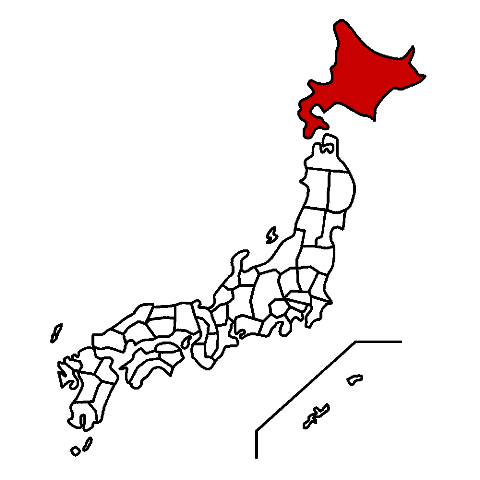
Aomori Prefecture
| Comprehensive Support C | Based Hospital | Cooperative agencies | Name of medical institution, professional organization, etc. |
|---|---|---|---|
| Hirosaki University | Based Hospital | Aomori Prefectural Central Hospital | |
| Hirosaki University | Based Hospital | Hachinohe City Hospital | |
| Hirosaki University | Cooperative agencies | Some administrative unions Shimokita Medical Center Mutsu General Hospital | |
| Hirosaki University | Cooperative agencies | Towada City Central Hospital | |
| Hirosaki University | Cooperative agencies | Aomori Workers’ Accident Hospital, Japan | |
| Hirosaki University | Cooperative agencies | Rokkasho Village Community Family Medical Center | |
| Hirosaki University | Cooperative agencies | Some administrative unions Shimokita Medical Center National Health Insurance Oma Hospital | |
| Hirosaki University | Cooperative agencies | Shimokita Medical Center Higashidori Village Clinic | |
| Hirosaki University | Cooperative agencies | Rokkasho Village National Health Insurance Chitosedaira Clinic | |
| Hirosaki University | Cooperative agencies | Nohechi Hospital | |
| Hirosaki University | Cooperative agencies | Misawa City Misawa Hospital | |
| Hirosaki University | Cooperative agencies | Japanese Red Cross Society Hachinohe Red Cross Hospital | |
| Hirosaki University | Cooperative agencies | National Hospital Organization Aomori Hospital | |
| Hirosaki University | Cooperative agencies | National Hospital Organization Hirosaki Medical Center | |
| Hirosaki University | Cooperative agencies | Hachinohe National Hospital Organization | |
| Hirosaki University | Cooperative agencies | Aomori Prefectural Medical Association | |
| Hirosaki University | Cooperative agencies | Aomori Prefectural Radiological Society | |
| Hirosaki University | Cooperative agencies | Aomori Prefectural Pharmacist Association | |
| Hirosaki University | Cooperative agencies | Aomori Prefectural Nursing Association | |
| Hirosaki University | Cooperative agencies | Kuroishi City National Health Insurance Kuroishi Hospital | |
| Hirosaki University | Cooperative agencies | Aomori City Hospital | |
| Hirosaki University | Cooperative agencies | Tsugaru West Five Regional Federation Tsugaru General Hospital | |
| Hirosaki University | Cooperative agencies | Environmental Science and Technology Research Institute |
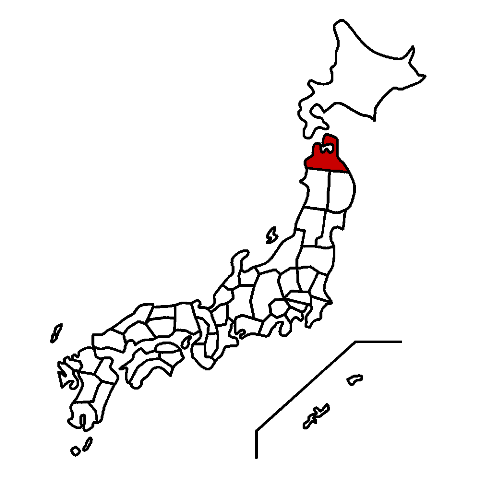
Miyagi Prefecture
| Comprehensive Support C | Based Hospital | Cooperative agencies | Name of medical institution, professional organization, etc. |
|---|---|---|---|
| Hirosaki University | Based Hospital | Tohoku University Hospital | |
| Hirosaki University | Based Hospital | National Hospital Organization Sendai Medical Center | |
| Hirosaki University | Based Hospital | Japanese Red Cross Society Ishinomaki Red Cross Hospital | |
| Hirosaki University | Cooperative agencies | Public Kariya Sogo Hospital | |
| Hirosaki University | Cooperative agencies | Miyagi Prefecture South Core Hospital | |
| Hirosaki University | Cooperative agencies | Social Medical Corporation Shodokai General South Tohoku Hospital | |
| Hirosaki University | Cooperative agencies | Sendai City Hospital | |
| Hirosaki University | Cooperative agencies | Japanese Red Cross Society Sendai Red Cross Hospital | |
| Hirosaki University | Cooperative agencies | Tohoku Workers’ Accident Hospital of the Workers’ Health and Safety Organization | |
| Hirosaki University | Cooperative agencies | Tohoku Medical and Pharmaceutical University Hospital | |
| Hirosaki University | Cooperative agencies | Sendai City Medical Center Sendai Open Hospital | |
| Hirosaki University | Cooperative agencies | Miyagi Welfare Association Saka General Hospital | |
| Hirosaki University | Cooperative agencies | Osaki Municipal Hospital | |
| Hirosaki University | Cooperative agencies | Kurihara City Kurihara Central Hospital | |
| Hirosaki University | Cooperative agencies | Tome City Tome City Hospital | |
| Hirosaki University | Cooperative agencies | Kesennuma City Hospital | |
| Hirosaki University | Cooperative agencies | Miyagi branch of the Japanese Red Cross Society | |
| Hirosaki University | Cooperative agencies | Miyagi Radiological Engineer Association | |
| Hirosaki University | Cooperative agencies | Miyagi Pharmacist Association | |
| Hirosaki University | Cooperative agencies | Ishinomaki Pharmacist Association |

Fukushima Prefecture
| Comprehensive Support C | Based Hospital | Cooperative agencies | Name of medical institution, professional organization, etc. |
|---|---|---|---|
| Fukushima Medical University | Based Hospital | Fukushima Medical University Hospital | |
| Fukushima Medical University | Based Hospital | Japanese Red Cross Society Fukushima Red Cross Hospital | |
| Fukushima Medical University | Based Hospital | Minamisoma City General Hospital | |
| Fukushima Medical University | Cooperative agencies | Fukushima Prefecture Federation of Welfare and Agricultural Cooperatives Association Shirakawa Welfare General Hospital | |
| Fukushima Medical University | Cooperative agencies | Onchikai Aizu Central Hospital | |
| Fukushima Medical University | Cooperative agencies | Fukushima Prefectural Minamiaizu Hospital | |
| Fukushima Medical University | Cooperative agencies | Iwaki City Medical Center | |
| Fukushima Medical University | Cooperative agencies | Fukushima Workers’ Accident Hospital | |
| Fukushima Medical University | Cooperative agencies | Fukushima Futaba Medical Center Hospital | |
| Fukushima Medical University | Cooperative agencies | Fukushima Medical Radiology Association | |
| Fukushima Medical University | Cooperative agencies | National Institute of Neurological Diseases | |
| Fukushima Medical University | Cooperative agencies | General South Tohoku Hospital | |
| Fukushima Medical University | Cooperative agencies | Fukushima Branch of the Japanese Red Cross Society |
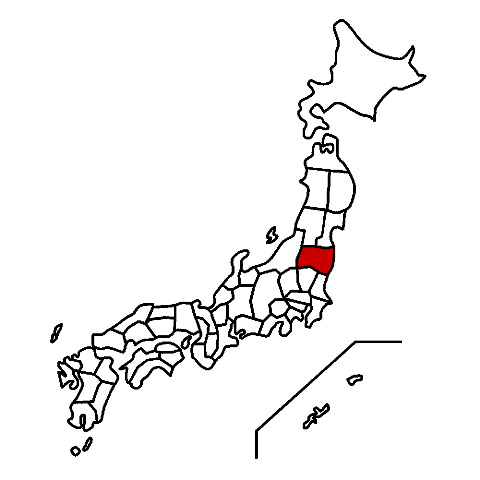
Ibaraki Prefecture
| Comprehensive Support C | Based Hospital | Cooperative agencies | Name of medical institution, professional organization, etc. |
|---|---|---|---|
| Fukushima Medical University | Based Hospital | National Hospital Organization Mito Medical Center | |
| Fukushima Medical University | Based Hospital | University of Tsukuba Hospital | |
| Fukushima Medical University | Based Hospital | Ibaraki Prefectural Central Hospital | |
| Fukushima Medical University | Cooperative agencies | Ibaraki Prefectural Welfare Federation Ibaraki Seinan Medical Center Hospital | |
| Fukushima Medical University | Cooperative agencies | University of Tsukuba Hospital Mito Regional Medical Education Center Ibaraki Prefectural Welfare Federation General Hospital Mito Kyodo Hospital | |
| Fukushima Medical University | Cooperative agencies | Ibaraki Pharmacist Association | |
| Fukushima Medical University | Cooperative agencies | Tokyo Medical University Ibaraki Medical Center | |
| Fukushima Medical University | Cooperative agencies | Japanese Red Cross Society Mito Red Cross Hospital | |
| Fukushima Medical University | Cooperative agencies | Kuji Chine Hospital | |
| Fukushima Medical University | Cooperative agencies | Ibaraki University | |
| Fukushima Medical University | Cooperative agencies | Ibaraki-Higashi Hospital | |
| Fukushima Medical University | Cooperative agencies | University of Tsukuba Corporation | |
| Fukushima Medical University | Cooperative agencies | Medical Corporation Watanabe-kai Oarai Kaigan Hospital | |
| Fukushima Medical University | Cooperative agencies | Hitachi, Ltd. Hitachi, Ltd. | |
| Fukushima Medical University | Cooperative agencies | Ibaraki Medical Radiologist Association |
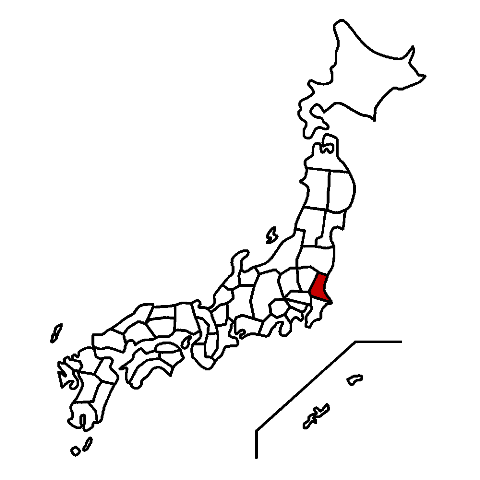
Kanagawa Prefecture
| Comprehensive Support C | Based Hospital | Cooperative agencies | Name of medical institution, professional organization, etc. |
|---|---|---|---|
| Fukushima Medical University | Based Hospital | Kitasato Research Institute, Kitasato University Hospital | |
| Fukushima Medical University | Cooperative agencies | Kawasaki City Hospital | |
| Fukushima Medical University | Cooperative agencies | Nihon Medical University Musashi-Kosugi Hospital | |
| Fukushima Medical University | Cooperative agencies | Yokosuka Mutual Aid Hospital, National Federation of Civil Service Mutual Aid Associations | |
| Fukushima Medical University | Cooperative agencies | Kanagawa Prefectural Radiological Engineer Association | |
| Fukushima Medical University | Cooperative agencies | Yokosuka City Hospital | |
| Fukushima Medical University | Cooperative agencies | Kanagawa Medical Association | |
| Fukushima Medical University | Cooperative agencies | Yokohama City University Citizen Medical Center | |
| Fukushima Medical University | Cooperative agencies | St Marianna Medical University Hospital |
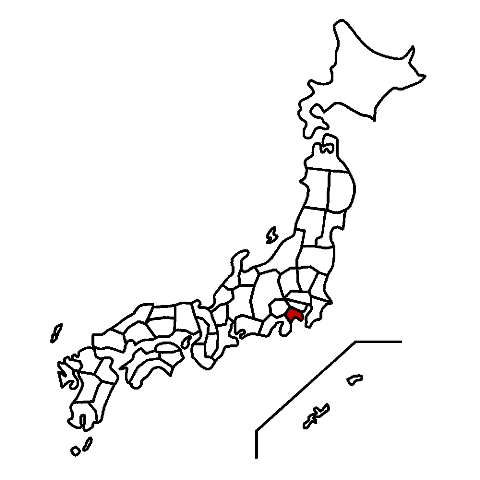
Niigata Prefecture
| Comprehensive Support C | Based Hospital | Cooperative agencies | Name of medical institution, professional organization, etc. |
|---|---|---|---|
| Fukushima Medical University | Based Hospital | Niigata University Medical and Dental General Hospital (Main Nuclear Disaster Base Hospital) | |
| Fukushima Medical University | Based Hospital | Niigata Prefectural Cancer Center Niigata Hospital | |
| Fukushima Medical University | Cooperative agencies | Murakami General Hospital | |
| Fukushima Medical University | Cooperative agencies | Prefectural Shibata Hospital | |
| Fukushima Medical University | Cooperative agencies | Shimokoshi Hospital | |
| Fukushima Medical University | Cooperative agencies | Niigata Municipal Hospital | |
| Fukushima Medical University | Cooperative agencies | Niigata Prefecture Saiseikai Saiseikai Niigata Hospital | |
| Fukushima Medical University | Cooperative agencies | Nagaoka Red Cross Hospital | |
| Fukushima Medical University | Cooperative agencies | Regional Medical Promotion Organization Uonuma Main Hospital | |
| Fukushima Medical University | Cooperative agencies | Prefectural Tokamachi Hospital | |
| Fukushima Medical University | Cooperative agencies | Kashiwazaki Medical Center | |
| Fukushima Medical University | Cooperative agencies | Prefectural Central Hospital | |
| Fukushima Medical University | Cooperative agencies | Itoigawa General Hospital | |
| Fukushima Medical University | Cooperative agencies | Sado General Hospital | |
| Fukushima Medical University | Cooperative agencies | The Niigata Medical Association | |
| Fukushima Medical University | Cooperative agencies | Niigata Pharmacist Association | |
| Fukushima Medical University | Cooperative agencies | Niigata Nursing Association | |
| Fukushima Medical University | Cooperative agencies | Niigata Medical Radiologist Association | |
| Fukushima Medical University | Cooperative agencies | Japanese Red Cross Society Niigata Prefecture Branch | |
| Fukushima Medical University | Cooperative agencies | Chiyoda Technol Kashiwazaki Kariwa Sales Office |
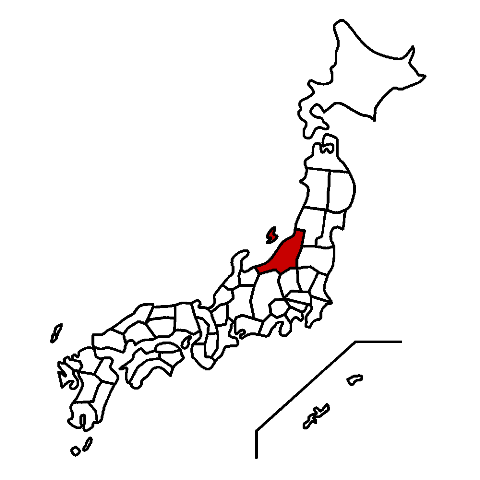
Toyama Prefecture
| Comprehensive Support C | Based Hospital | Cooperative agencies | Name of medical institution, professional organization, etc. |
|---|---|---|---|
| Hiroshima University | Based Hospital | Toyama Prefectural Central Hospital | |
| Hiroshima University | Based Hospital | University of Toyama Hospital | |
| Hiroshima University | Cooperative agencies | Toyama City Toyama City Hospital | |
| Hiroshima University | Cooperative agencies | Japanese Red Cross Society Toyama Red Cross Hospital | |
| Hiroshima University | Cooperative agencies | Toyama Saiseikai Toyama Hospital | |
| Hiroshima University | Cooperative agencies | Toyama City Toyama Machinaka Hospital | |
| Hiroshima University | Cooperative agencies | National Hospital Organization Toyama Hospital | |
| Hiroshima University | Cooperative agencies | Toyama Prefectural Rehabilitation Hospital Children’s Support Center | |
| Hiroshima University | Cooperative agencies | Toyama Prefecture Federation of Welfare and Agriculture Cooperative Association Takaoka Hospital | |
| Hiroshima University | Cooperative agencies | Takaoka City Hospital | |
| Hiroshima University | Cooperative agencies | Toyama Saiseikai Takaoka Hospital | |
| Hiroshima University | Cooperative agencies | National Institute for the Promotion of Regional Medical Functions Takaoka Fushiya Hospital | |
| Hiroshima University | Cooperative agencies | National Institutes of Health and Safety of Workers, Toyama Workers’ Accident Hospital | |
| Hiroshima University | Cooperative agencies | Kanazawa Medical University Himi Civic Hospital | |
| Hiroshima University | Cooperative agencies | Toyama Prefectural Federation of Welfare and Agriculture Cooperative Associations Namerikawa Hospital | |
| Hiroshima University | Cooperative agencies | Kurobe Municipal Hospital | |
| Hiroshima University | Cooperative agencies | Tonami City Hospital | |
| Hiroshima University | Cooperative agencies | Hokuriku Central Hospital of the Public Schools Mutual Aid Association | |
| Hiroshima University | Cooperative agencies | Nanto Citizen Hospital | |
| Hiroshima University | Cooperative agencies | Nanto Central Hospital | |
| Hiroshima University | Cooperative agencies | National Hospital Organization Hokuriku Hospital | |
| Hiroshima University | Cooperative agencies | Izumi Citizen Hospital | |
| Hiroshima University | Cooperative agencies | Kamiichi General Hospital | |
| Hiroshima University | Cooperative agencies | Asahi General Hospital | |
| Hiroshima University | Cooperative agencies | Toyama Prefectural Medical Association | |
| Hiroshima University | Cooperative agencies | Toyama Prefectural Nursing Association | |
| Hiroshima University | Cooperative agencies | Toyama Pharmacist Association | |
| Hiroshima University | Cooperative agencies | Toyama Prefectural Radiology Association |
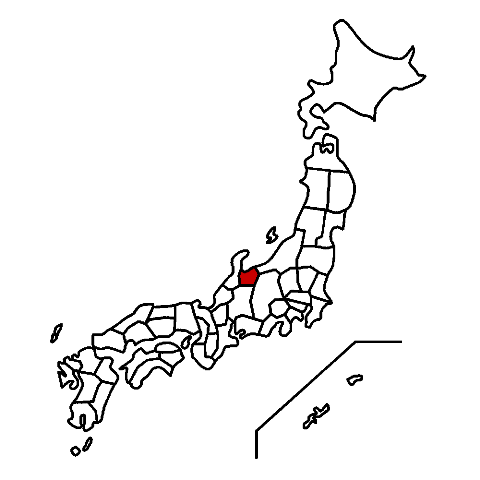
Ishikawa Prefecture
| Comprehensive Support C | Based Hospital | Cooperative agencies | Name of medical institution, professional organization, etc. |
|---|---|---|---|
| Hiroshima University | Based Hospital | Kanazawa University Hospital | |
| Hiroshima University | Based Hospital | National Hospital Organization Kanazawa Medical Center | |
| Hiroshima University | Based Hospital | Ishikawa Prefectural Central Hospital | |
| Hiroshima University | Cooperative agencies | National Hospital Organization Ishikawa Hospital | |
| Hiroshima University | Cooperative agencies | Kaga City Medical Center | |
| Hiroshima University | Cooperative agencies | National Health Insurance Komatsu Municipal Hospital | |
| Hiroshima University | Cooperative agencies | National Health Insurance Nomi City Hospital | |
| Hiroshima University | Cooperative agencies | Kanazawa City Hospital | |
| Hiroshima University | Cooperative agencies | Japanese Red Cross Society Kanazawa Red Cross Hospital | |
| Hiroshima University | Cooperative agencies | National Hospital Organization Io Hospital | |
| Hiroshima University | Cooperative agencies | Kanazawa Hospital, Japan Agency for the Promotion of Regional Medical Functions | |
| Hiroshima University | Cooperative agencies | Ishikawa Prefecture Saiseikai Kanazawa Hospital | |
| Hiroshima University | Cooperative agencies | Matsuto-Ishikawa Central Hospital | |
| Hiroshima University | Cooperative agencies | Public Tsurugi Hospital | |
| Hiroshima University | Cooperative agencies | Ishikawa Prefectural Takamatsu Hospital | |
| Hiroshima University | Cooperative agencies | Hebei Central Hospital | |
| Hiroshima University | Cooperative agencies | Public Hakui Hospital | |
| Hiroshima University | Cooperative agencies | Hodatsushimizu Hospital | |
| Hiroshima University | Cooperative agencies | Town Furai Hospital | |
| Hiroshima University | Cooperative agencies | National Hospital Organization Nanao Hospital | |
| Hiroshima University | Cooperative agencies | Noto General Hospital | |
| Hiroshima University | Cooperative agencies | Wajima City Hospital | |
| Hiroshima University | Cooperative agencies | Public Anatomy Hospital | |
| Hiroshima University | Cooperative agencies | Ushitsu General Hospital | |
| Hiroshima University | Cooperative agencies | Suzu City General Hospital | |
| Hiroshima University | Cooperative agencies | Ishikawa Medical Association | |
| Hiroshima University | Cooperative agencies | Ishikawa Pharmacist Association | |
| Hiroshima University | Cooperative agencies | Ishikawa Medical Radiologists Association |
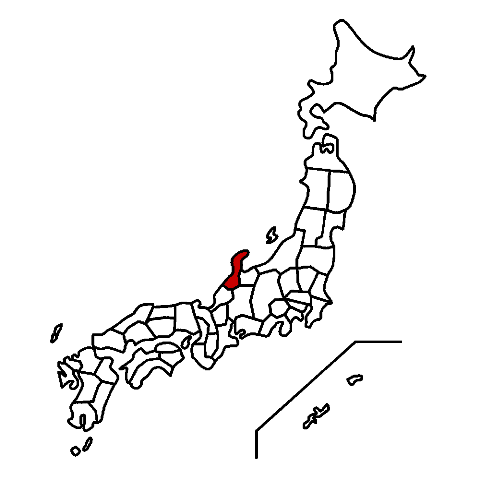
Fukui Prefecture
| Comprehensive Support C | Based Hospital | Cooperative agencies | Name of medical institution, professional organization, etc. |
|---|---|---|---|
| Hiroshima University | Based Hospital | Fukui Prefectural Hospital | |
| Hiroshima University | Based Hospital | Fukui University Hospital | |
| Hiroshima University | Based Hospital | Japanese Red Cross Society Fukui Red Cross Hospital | |
| Hiroshima University | Cooperative agencies | Tsuruga Medical Center, National Hospital Organization | |
| Hiroshima University | Cooperative agencies | Tsuruga City Hospital | |
| Hiroshima University | Cooperative agencies | Genpaku Sugita Memorial Public Obama Hospital | |
| Hiroshima University | Cooperative agencies | Wakasa Takahama Hospital, Japan | |
| Hiroshima University | Cooperative agencies | Fukui Saiseikai Hospital | |
| Hiroshima University | Cooperative agencies | Katsuyama General Hospital, Fukui, Japan | |
| Hiroshima University | Cooperative agencies | Tannan Hospital | |
| Hiroshima University | Cooperative agencies | National Hospital Organization Awara Hospital | |
| Hiroshima University | Cooperative agencies | Sakai City Mikuni Hospital | |
| Hiroshima University | Cooperative agencies | Echizen-cho National Health Insurance Oda Hospital | |
| Hiroshima University | Cooperative agencies | Lake Hills Mikata Hospital | |
| Hiroshima University | Cooperative agencies | Wakasa-cho National Health Insurance Kaminaka Clinic | |
| Hiroshima University | Cooperative agencies | Fukui Prefectural Medical Association | |
| Hiroshima University | Cooperative agencies | Fukui Pharmacist Association | |
| Hiroshima University | Cooperative agencies | Fukui Prefectural Radiology Association |
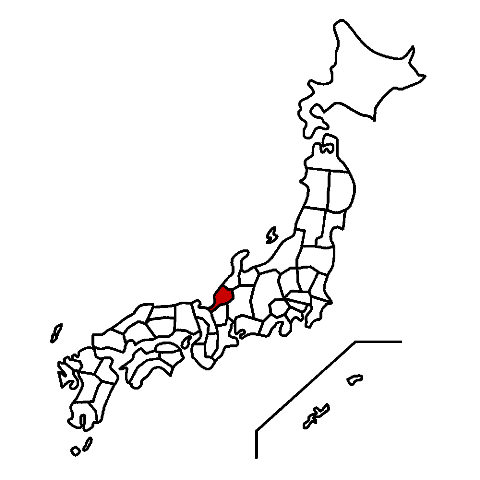
Gifu Prefecture
| Comprehensive Support C | Based Hospital | Cooperative agencies | Name of medical institution, professional organization, etc. |
|---|---|---|---|
| Hiroshima University | Based Hospital | Tokai National University Organization Gifu University Hospital | |
| Hiroshima University | Cooperative agencies | Ogaki Municipal Hospital | |
| Hiroshima University | Cooperative agencies | Gifu Medical Association | |
| Hiroshima University | Cooperative agencies | Ibi County Medical Association | |
| Hiroshima University | Cooperative agencies | Gifu Pharmacist Association | |
| Hiroshima University | Cooperative agencies | Ibi County Pharmacist Association | |
| Hiroshima University | Cooperative agencies | Gifu Medical Radiology Association | |
| Hiroshima University | Cooperative agencies | Gifu Prefectural Government Medical Center | |
| Hiroshima University | Cooperative agencies | Japanese Red Cross Society Gifu Red Cross Hospital |
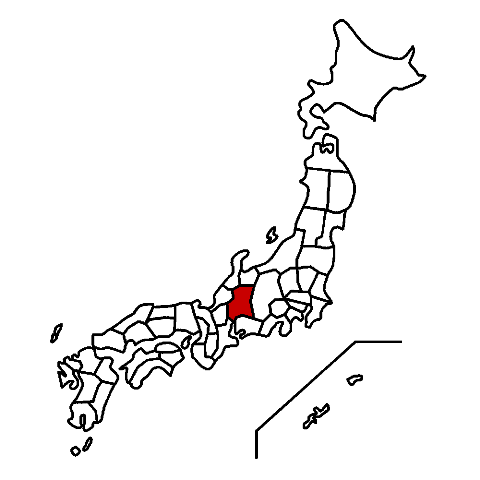
Shizuoka Prefecture
| Comprehensive Support C | Based Hospital | Cooperative agencies | Name of medical institution, professional organization, etc. |
|---|---|---|---|
| Fukushima Medical University | Based Hospital | Shizuoka Prefectural General Hospital | |
| Fukushima Medical University | Based Hospital | Hamamatsu Medical University Hospital | |
| Fukushima Medical University | Cooperative agencies | Omaezaki General Hospital | |
| Fukushima Medical University | Cooperative agencies | Haibara General Hospital | |
| Fukushima Medical University | Cooperative agencies | Kikugawa City General Hospital | |
| Fukushima Medical University | Cooperative agencies | Fujieda City General Hospital | |
| Fukushima Medical University | Cooperative agencies | Yaizu City General Hospital | |
| Fukushima Medical University | Cooperative agencies | Shimada City General Medical Center | |
| Fukushima Medical University | Cooperative agencies | Iwata City General Hospital | |
| Fukushima Medical University | Cooperative agencies | Middle East Medical Center |
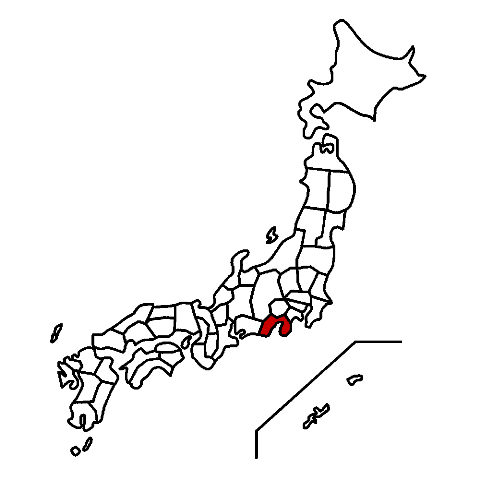
Shiga Prefecture
| Comprehensive Support C | Based Hospital | Cooperative agencies | Name of medical institution, professional organization, etc. |
|---|---|---|---|
| Hiroshima University | Based Hospital | Japanese Red Cross President Hama Red Cross Hospital (Main Nuclear Disaster Base Hospital) | |
| Hiroshima University | Based Hospital | Japanese Red Cross Society Otsu Red Cross Hospital | |
| Hiroshima University | Based Hospital | Shiga Medical University Hospital | |
| Hiroshima University | Cooperative agencies | Otsu City Hospital | |
| Hiroshima University | Cooperative agencies | Seikokai Tankai Medical Center | |
| Hiroshima University | Cooperative agencies | Saiseikai Shiga Prefectural Hospital | |
| Hiroshima University | Cooperative agencies | Koka Hospital | |
| Hiroshima University | Cooperative agencies | Omihachiman City Medical Center | |
| Hiroshima University | Cooperative agencies | Hikone City Hospital | |
| Hiroshima University | Cooperative agencies | Nagahama City Hospital | |
| Hiroshima University | Cooperative agencies | Nagahama City Kohoku Hospital | |
| Hiroshima University | Cooperative agencies | Takashima City Hospital | |
| Hiroshima University | Cooperative agencies | The Shiga Prefectural Medical Association | |
| Hiroshima University | Cooperative agencies | The Shiga Pharmac Society of Shiga Prefecture | |
| Hiroshima University | Cooperative agencies | The Shiga Prefectural Nursing Association | |
| Hiroshima University | Cooperative agencies | Shiga Prefectural Medical Radiologists Association | |
| Hiroshima University | Cooperative agencies | The Japanese Red Cross Society Shiga Prefecture Branch |
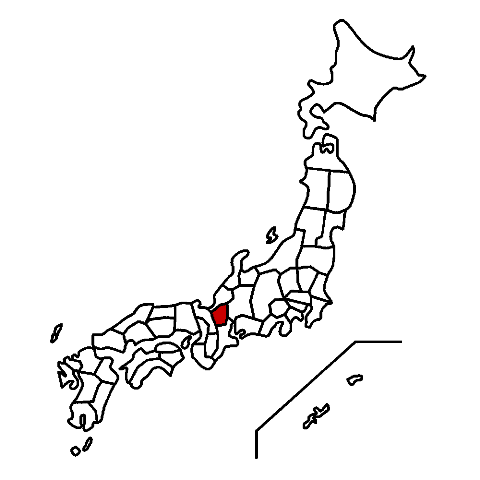
Kyoto Prefecture
| Comprehensive Support C | Based Hospital | Cooperative agencies | Name of medical institution, professional organization, etc. |
|---|---|---|---|
| Hiroshima University | Based Hospital | National Hospital Organization Kyoto Medical Center (Main Nuclear Disaster Base Hospital) | |
| Hiroshima University | Based Hospital | Kyoto University Hospital | |
| Hiroshima University | Based Hospital | Kyoto Prefectural University Hospital | |
| Hiroshima University | Cooperative agencies | Medical Corporation Kiyonkai Kameoka Shimizu Hospital | |
| Hiroshima University | Cooperative agencies | Kameoka City Hospital | |
| Hiroshima University | Cooperative agencies | Kyoto Chubu Medical Center | |
| Hiroshima University | Cooperative agencies | Kuniho Kyotanba-cho Hospital | |
| Hiroshima University | Cooperative agencies | Fukuchiyama City Hospital | |
| Hiroshima University | Cooperative agencies | Medical Corporation Fukudojikai Kyoto Lournes Hospital | |
| Hiroshima University | Cooperative agencies | Fukuchiyama Municipal Hospital Oe Branch Hospital | |
| Hiroshima University | Cooperative agencies | Ayabe City Hospital | |
| Hiroshima University | Cooperative agencies | Maizuru Medical Center, National Hospital Organization | |
| Hiroshima University | Cooperative agencies | Japanese Red Cross Society Maizuru Red Cross Hospital | |
| Hiroshima University | Cooperative agencies | Maizuru Mutual Aid Hospital, a federation of the National Civil Service Mutual Aid Association | |
| Hiroshima University | Cooperative agencies | Kyoto Prefectural University of Medicine, Northern Medical Center | |
| Hiroshima University | Cooperative agencies | Keitango City Yaei Hospital | |
| Hiroshima University | Cooperative agencies | Kumihama Hospital, Kyotango City | |
| Hiroshima University | Cooperative agencies | The Japanese Red Cross Society, Kyoto Prefecture Branch | |
| Hiroshima University | Cooperative agencies | The Kyoto Prefectural Medical Association | |
| Hiroshima University | Cooperative agencies | Maizuru Medical Association | |
| Hiroshima University | Cooperative agencies | Yossing Medical Association | |
| Hiroshima University | Cooperative agencies | Fukuchiyama Medical Association | |
| Hiroshima University | Cooperative agencies | Funai Medical Association | |
| Hiroshima University | Cooperative agencies | Sakyo Medical Association | |
| Hiroshima University | Cooperative agencies | The Kyoto Pharmacist Association | |
| Hiroshima University | Cooperative agencies | Funai Pharmacist Association | |
| Hiroshima University | Cooperative agencies | Ayabe Pharmacist Association | |
| Hiroshima University | Cooperative agencies | Fukuchiyama Pharmacist Association | |
| Hiroshima University | Cooperative agencies | Maizuru Pharmacist Association | |
| Hiroshima University | Cooperative agencies | Tango Pharmacist Association | |
| Hiroshima University | Cooperative agencies | Prefectural Radiological Engineers Association |
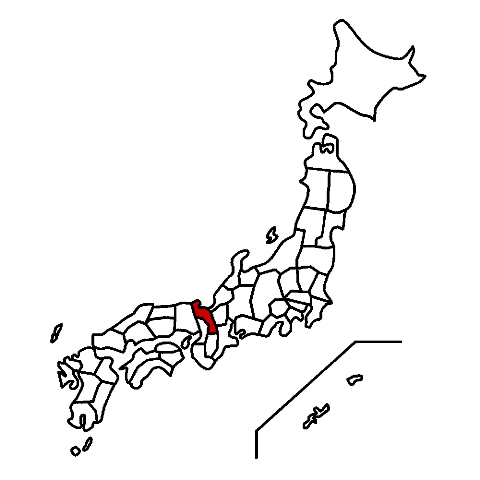
Osaka Prefecture
| Comprehensive Support C | Based Hospital | Cooperative agencies | Name of medical institution, professional organization, etc. |
|---|---|---|---|
| Hiroshima University | Based Hospital | National Hospital Organization Osaka Medical Center | |
| Hiroshima University | Cooperative agencies | Rinku Medical Center | |
| Hiroshima University | Cooperative agencies | Osaka Prefectural Nakagawachi Emergency Care Center |
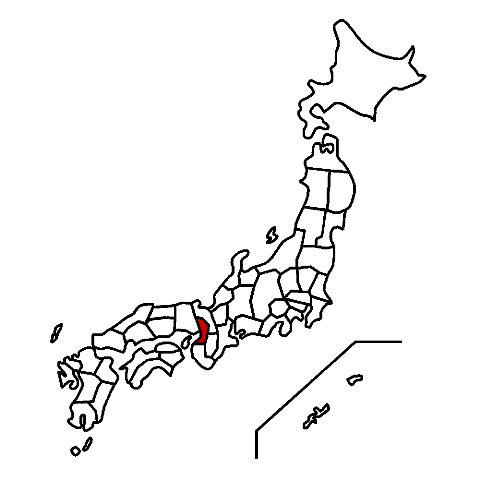
Tottori Prefecture
| Comprehensive Support C | Based Hospital | Cooperative agencies | Name of medical institution, professional organization, etc. |
|---|---|---|---|
| Hiroshima University | Based Hospital | Tottori Prefectural Central Hospital | |
| Hiroshima University | Based Hospital | Tottori University Hospital | |
| Hiroshima University | Cooperative agencies | Japanese Red Cross Society Tottori Red Cross Hospital | |
| Hiroshima University | Cooperative agencies | Tottori City Hospital | |
| Hiroshima University | Cooperative agencies | Iwami-cho National Health Insurance Iwami Hospital | |
| Hiroshima University | Cooperative agencies | National Health Insurance Chizu Hospital | |
| Hiroshima University | Cooperative agencies | Tottori Prefectural Welfare Hospital | |
| Hiroshima University | Cooperative agencies | Medical Corporation Cross-Kaminoshima Hospital | |
| Hiroshima University | Cooperative agencies | Shimizu Hospital | |
| Hiroshima University | Cooperative agencies | Tottori Prefecture Saiseikai Sakaiminato General Hospital | |
| Hiroshima University | Cooperative agencies | Hakuai Hospital | |
| Hiroshima University | Cooperative agencies | Sanin Workers’ Accident Hospital | |
| Hiroshima University | Cooperative agencies | Yonago Medical Center, National Hospital Organization | |
| Hiroshima University | Cooperative agencies | Nanbu Town National Health Insurance Saihaku Hospital | |
| Hiroshima University | Cooperative agencies | Hino Hospital | |
| Hiroshima University | Cooperative agencies | Nichinan National Health Insurance Nichinan Hospital |
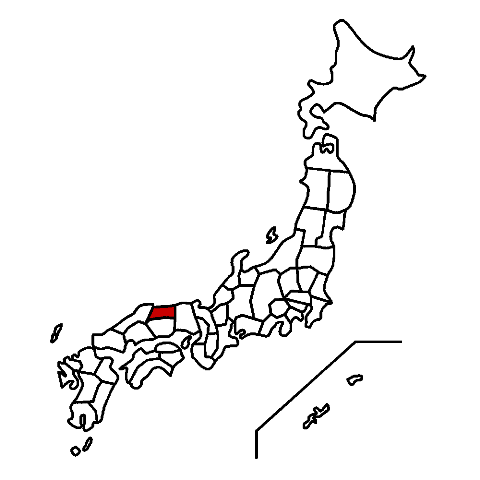
Shimane Prefecture
| Comprehensive Support C | Based Hospital | Cooperative agencies | Name of medical institution, professional organization, etc. |
|---|---|---|---|
| Hiroshima University | Based Hospital | Shimane Prefectural Central Hospital | |
| Hiroshima University | Based Hospital | Shimane University Hospital | |
| Hiroshima University | Cooperative agencies | Japanese Red Cross Society Matsue Red Cross Hospital | |
| Hiroshima University | Cooperative agencies | Matsue City Hospital | |
| Hiroshima University | Cooperative agencies | General Hospital Matsue Co-op Hospital | |
| Hiroshima University | Cooperative agencies | Matsue Memorial Hospital | |
| Hiroshima University | Cooperative agencies | Tamazo Hospital, Japan National Institute for the Promotion of Regional Medical Functions | |
| Hiroshima University | Cooperative agencies | Yasugi City Hospital | |
| Hiroshima University | Cooperative agencies | Yunnan City Hospital | |
| Hiroshima University | Cooperative agencies | Heisei Memorial Hospital | |
| Hiroshima University | Cooperative agencies | Town Okuizumo Hospital | |
| Hiroshima University | Cooperative agencies | Iinan Prefectural Iinan Hospital | |
| Hiroshima University | Cooperative agencies | Izumo Municipal Hospital | |
| Hiroshima University | Cooperative agencies | Izumo City Medical Center | |
| Hiroshima University | Cooperative agencies | Izumo Tokushukai Hospital | |
| Hiroshima University | Cooperative agencies | Daejeon City Hospital | |
| Hiroshima University | Cooperative agencies | Shimane Prefectural Medical Association | |
| Hiroshima University | Cooperative agencies | Shimane Prefectural Dental Association | |
| Hiroshima University | Cooperative agencies | Shimane Pharmacist Association | |
| Hiroshima University | Cooperative agencies | Shimane Prefectural Nursing Association | |
| Hiroshima University | Cooperative agencies | Shimane Medical Radiologist Association | |
| Hiroshima University | Cooperative agencies | Saiseikai Gotsu General Hospital | |
| Hiroshima University | Cooperative agencies | Masuda Red Cross Hospital |
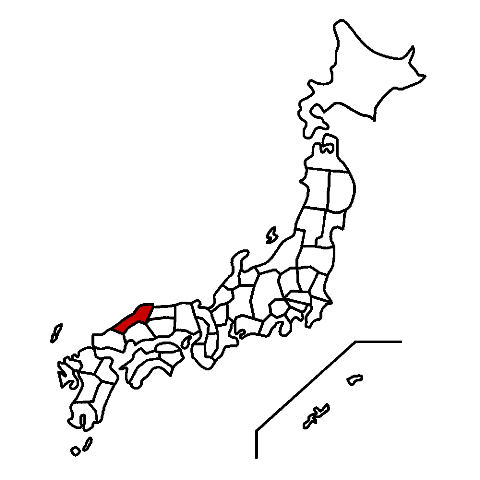
Okayama Prefecture
| Comprehensive Support C | Based Hospital | Cooperative agencies | Name of medical institution, professional organization, etc. |
|---|---|---|---|
| Hiroshima University | Based Hospital | National Hospital Organization Okayama Medical Center | |
| Hiroshima University | Cooperative agencies | Tsuyama Central Hospital | |
| Hiroshima University | Cooperative agencies | National University Corporation Okayama University Hospital |
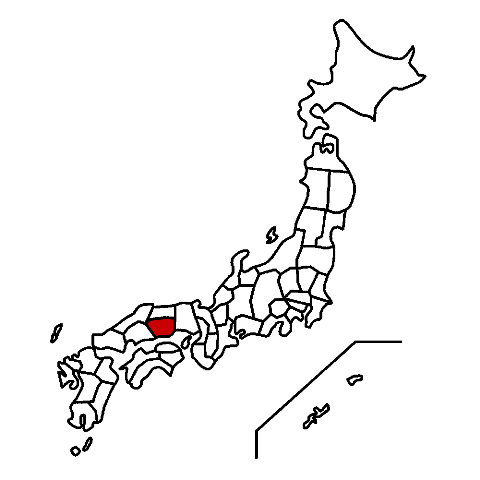
Yamaguchi Prefecture
| Comprehensive Support C | Based Hospital | Cooperative agencies | Name of medical institution, professional organization, etc. |
|---|---|---|---|
| Hiroshima University | Based Hospital | Yamaguchi University Hospital | |
| Hiroshima University | Cooperative agencies | Shuto General Hospital, Association of the Federation of Yamaguchi Prefectural Welfare and Agricultural Cooperatives |
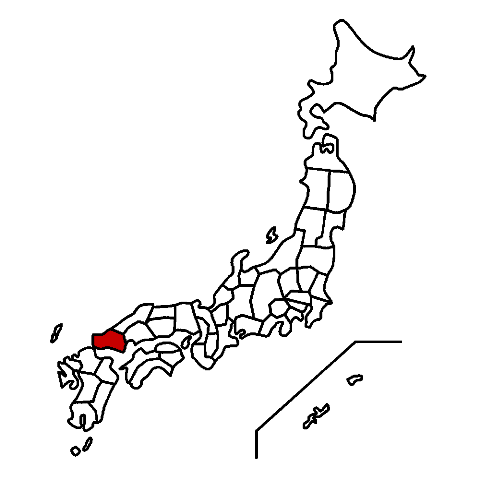
Ehime Prefecture
| Comprehensive Support C | Based Hospital | Cooperative agencies | Name of medical institution, professional organization, etc. |
|---|---|---|---|
| Hiroshima University | Based Hospital | Ehime University Hospital | |
| Hiroshima University | Based Hospital | Japanese Red Cross Society Matsuyama Red Cross Hospital | |
| Hiroshima University | Based Hospital | Ehime Prefectural Central Hospital | |
| Hiroshima University | Based Hospital | Yawatahama General Hospital | |
| Hiroshima University | Cooperative agencies | Public School Mutual Aid Association Shikoku Chuo Hospital | |
| Hiroshima University | Cooperative agencies | Prefectural Niihama Hospital | |
| Hiroshima University | Cooperative agencies | Prefectural Imabari Hospital | |
| Hiroshima University | Cooperative agencies | Uwajima City Hospital | |
| Hiroshima University | Cooperative agencies | Saijo City Zhou Kuwa Hospital | |
| Hiroshima University | Cooperative agencies | Kumakogen Town Hospital | |
| Hiroshima University | Cooperative agencies | Ozu City Hospital | |
| Hiroshima University | Cooperative agencies | Seiyo City Hospital | |
| Hiroshima University | Cooperative agencies | Kitawa Hospital, Kihoku Town | |
| Hiroshima University | Cooperative agencies | Prefectural Minami-Uwa Hospital | |
| Hiroshima University | Cooperative agencies | Uwajima Hospital, Japan | |
| Hiroshima University | Cooperative agencies | Ehime Prefectural Medical Association | |
| Hiroshima University | Cooperative agencies | Ehime Prefectural Dental Association | |
| Hiroshima University | Cooperative agencies | Ehime Prefecture Nursing Association | |
| Hiroshima University | Cooperative agencies | Ehime Pharmacist Association | |
| Hiroshima University | Cooperative agencies | Japanese Red Cross Society Ehime Prefecture Branch | |
| Hiroshima University | Cooperative agencies | Ehime Medical Radiologist Association | |
| Hiroshima University | Cooperative agencies | Ehime Prefecture Disaster Rehabilitation Liaison Council |
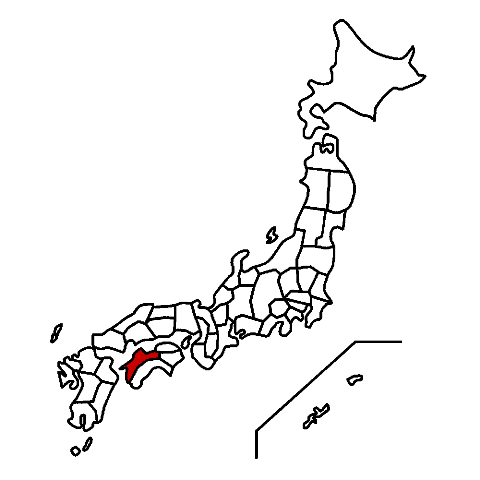
Fukuoka Prefecture
| Comprehensive Support C | Based Hospital | Cooperative agencies | Name of medical institution, professional organization, etc. |
|---|---|---|---|
| Nagasaki University | Based Hospital | Kyushu University Hospital | |
| Nagasaki University | Cooperative agencies | Kitakyushu City Yawata Hospital | |
| Nagasaki University | Cooperative agencies | National Hospital Organization Kyushu Medical Center | |
| Nagasaki University | Cooperative agencies | Fukuoka University Hospital | |
| Nagasaki University | Cooperative agencies | Kurume University Hospital | |
| Nagasaki University | Cooperative agencies | Iizuka Hospital | |
| Nagasaki University | Cooperative agencies | Itoshima Medical Association Hospital | |
| Nagasaki University | Cooperative agencies | Fukuoka Medical Radiology Association |
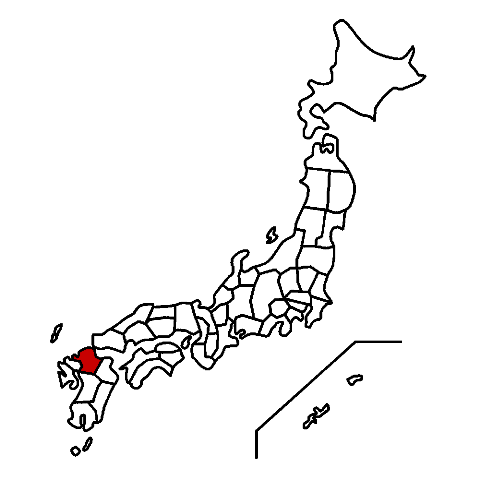
Saga Prefecture
| Comprehensive Support C | Based Hospital | Cooperative agencies | Name of medical institution, professional organization, etc. |
|---|---|---|---|
| Nagasaki University | Based Hospital | Japanese Red Cross Society Karatsu Red Cross Hospital | |
| Nagasaki University | Based Hospital | Saga Prefectural Medical Center Koseikan | |
| Nagasaki University | Based Hospital | Saga University Hospital | |
| Nagasaki University | Cooperative agencies | Taku City Hospital | |
| Nagasaki University | Cooperative agencies | Medical Corporation Kiyokikai Yayoi Kagaro Hospital | |
| Nagasaki University | Cooperative agencies | Ureshino Medical Center, National Hospital Organization | |
| Nagasaki University | Cooperative agencies | Imari Arita Kyoritsu Hospital | |
| Nagasaki University | Cooperative agencies | Shiraishi Kyoritsu Hospital | |
| Nagasaki University | Cooperative agencies | National Hospital Organization Saga Hospital | |
| Nagasaki University | Cooperative agencies | Saga Prefectural Radiologicalist Association |
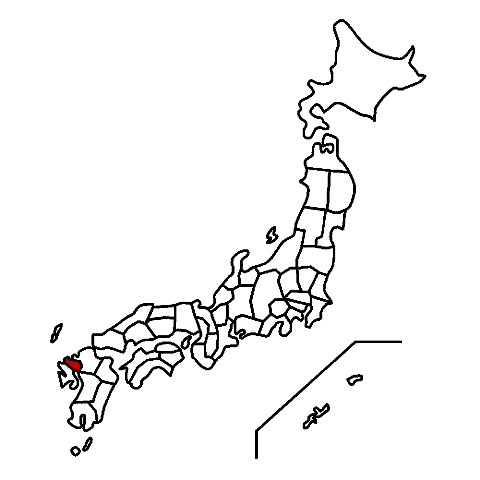
Nagasaki Prefecture
| Comprehensive Support C | Based Hospital | Cooperative agencies | Name of medical institution, professional organization, etc. |
|---|---|---|---|
| Nagasaki University | Based Hospital | National Hospital Organization Nagasaki Medical Center | |
| Nagasaki University | Cooperative agencies | Sasebo City General Medical Center | |
| Nagasaki University | Cooperative agencies | National Institutes of Health and Safety of Workers, Nagasaki Workers’ Accident Hospital | |
| Nagasaki University | Cooperative agencies | National Hospital Organization Nagasaki Kawatana Medical Center | |
| Nagasaki University | Cooperative agencies | National Health Insurance Hirado Citizen Hospital | |
| Nagasaki University | Cooperative agencies | Matsuura Central Hospital of the Japan Agency for the Promotion of Regional Medical Functions | |
| Nagasaki University | Cooperative agencies | Iki Hospital, Nagasaki Prefecture Hospital | |
| Nagasaki University | Cooperative agencies | Japanese Red Cross Society Nagasaki Atomic Bomb Hospital | |
| Nagasaki University | Cooperative agencies | Nagasaki Prefectural Medical Association | |
| Nagasaki University | Cooperative agencies | Nagasaki Pharmacist Association | |
| Nagasaki University | Cooperative agencies | General Association of Radiological Engineers of Nagasaki Prefectural Medical Clinic |
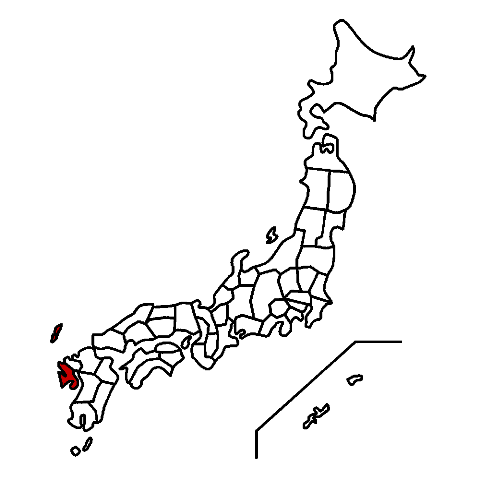
Kagoshima Prefecture
| Comprehensive Support C | Based Hospital | Cooperative agencies | Name of medical institution, professional organization, etc. |
|---|---|---|---|
| Nagasaki University | Based Hospital | Kagoshima University Hospital | |
| Nagasaki University | Based Hospital | Social Welfare Corporation Onshi Foundation Saiseikai Kawauchi Hospital | |
| Nagasaki University | Cooperative agencies | Kagoshima City Hospital | |
| Nagasaki University | Cooperative agencies | Kagoshima City Medical Association Hospital | |
| Nagasaki University | Cooperative agencies | Japanese Red Cross Society Kagoshima Red Cross Hospital | |
| Nagasaki University | Cooperative agencies | Yonemori Hospital | |
| Nagasaki University | Cooperative agencies | Kagoshima Prefectural Satsuma-Nan Hospital | |
| Nagasaki University | Cooperative agencies | Izumi Medical Center | |
| Nagasaki University | Cooperative agencies | Kagoshima Prefectural Hokusatsu Hospital | |
| Nagasaki University | Cooperative agencies | Kirishima City Medical Association Medical Center | |
| Nagasaki University | Cooperative agencies | Prefectural Health Plaza Kanoya Medical Center | |
| Nagasaki University | Cooperative agencies | Soo Medical Association | |
| Nagasaki University | Cooperative agencies | Social Medical Corporation Yoshishun Honoring Society Tanegashima Medical Center | |
| Nagasaki University | Cooperative agencies | Kagoshima Prefectural Oshima Hospital | |
| Nagasaki University | Cooperative agencies | National Hospital Organization Kagoshima Medical Center | |
| Nagasaki University | Cooperative agencies | Ibusuki Medical Center, National Hospital Organization | |
| Nagasaki University | Cooperative agencies | National Hospital Organization Minami-Kyushu Hospital | |
| Nagasaki University | Cooperative agencies | Kawauchi City Medical Association Citizen’s Hospital | |
| Nagasaki University | Cooperative agencies | Kagoshima City Health Center | |
| Nagasaki University | Cooperative agencies | Ijuin Health Center | |
| Nagasaki University | Cooperative agencies | Kaseda Health Center | |
| Nagasaki University | Cooperative agencies | Ibusuki Health Center | |
| Nagasaki University | Cooperative agencies | Kawasatsu Health Center | |
| Nagasaki University | Cooperative agencies | Izumi Health Center | |
| Nagasaki University | Cooperative agencies | Aira Health Center | |
| Nagasaki University | Cooperative agencies | Oguchi Health Center | |
| Nagasaki University | Cooperative agencies | Kanoya Health Center | |
| Nagasaki University | Cooperative agencies | Shibushi Health Center | |
| Nagasaki University | Cooperative agencies | Nishinoomote Health Center | |
| Nagasaki University | Cooperative agencies | Yakushima Health Center | |
| Nagasaki University | Cooperative agencies | Naze Health Center | |
| Nagasaki University | Cooperative agencies | Tokunoshima Health Center | |
| Nagasaki University | Cooperative agencies | Chiyoda Technol Co., Ltd. | |
| Nagasaki University | Cooperative agencies | Kagoshima Prefectural Radiology Association |
